








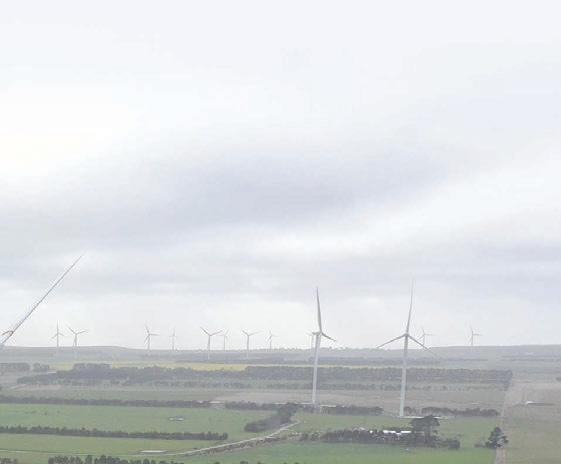
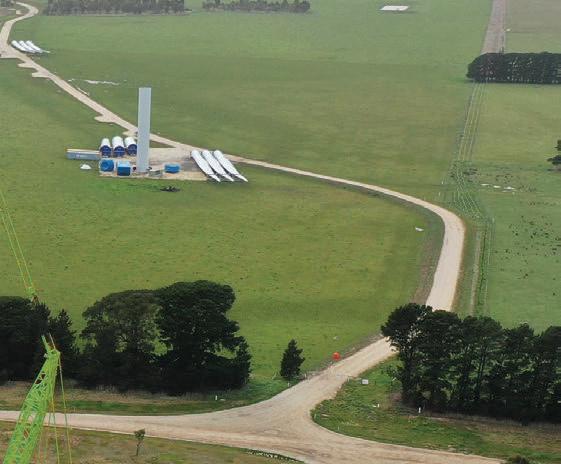
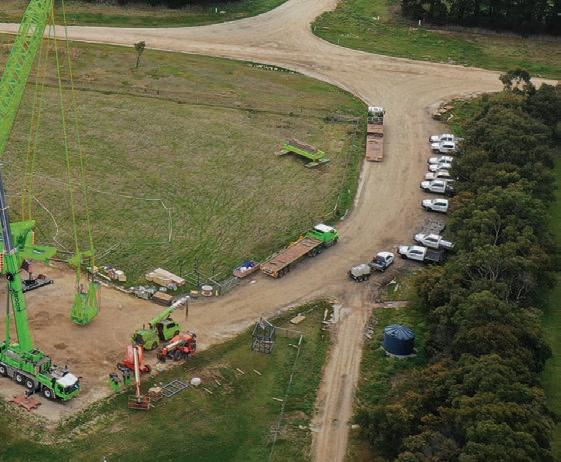


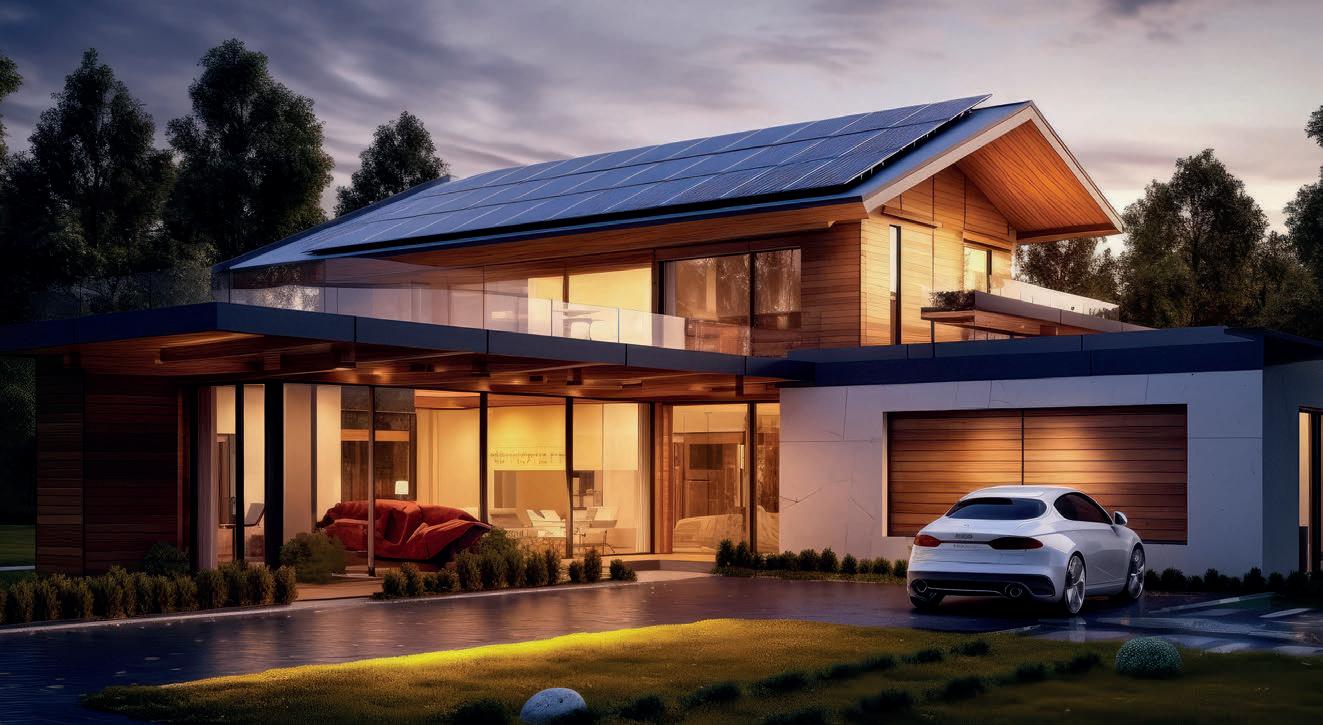



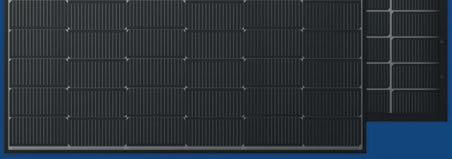









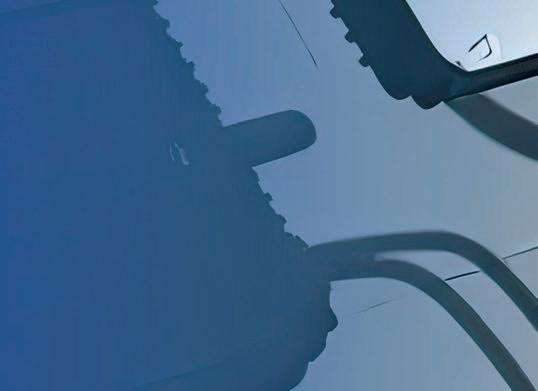


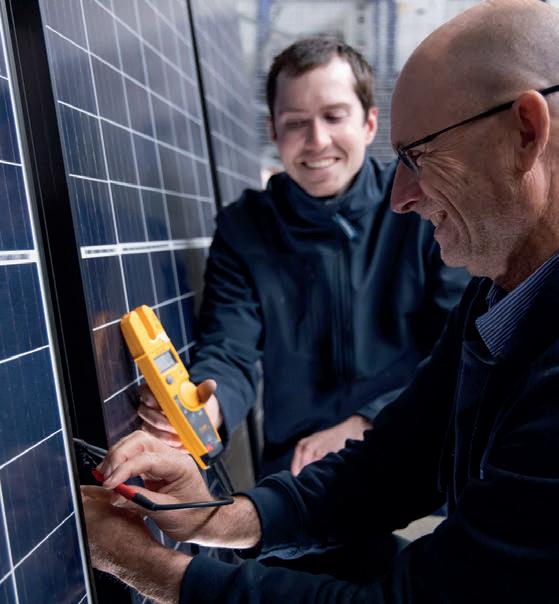
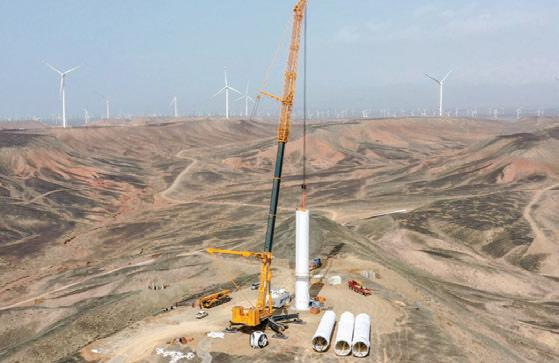









Welcome to the June edition of ecogeneration. This edition focuses on the ever-evolving wind industry and the different cogs in the turbines that help make them spin.
Despite Australia only having a small amount of offshore wind projects, onshore wind still accounted for more than 13 per cent of Australia’s overall power generation in 2023, according to a report from the Clean Energy Council.
However, with almost 102 gigawatt (GW) of offshore wind announced since October 2022, the country is on the precipice of becoming an offshore wind superpower, with PwC predicting the sector could contribute $40 billion more to Australia’s GDP between 2027 and 2040, creating up to 19,000 jobs in the process.
In the pages of this issue of ecogeneration, you will find specialised content focusing on companies who have positioned themselves at the forefront of on and offshore wind, from developers and financiers to contractors and operators.
We also take a deep dive into Australia dropping its antidumping duties on imported Chinese wind turbines. In an exclusive ecogeneration interview with Tim Buckley, CEO of Climate Energy Finance, he explains how lifting the punitive trade barriers represents a positive development aligned with Australia’s ambitions to tackle the climate crisis through a collective global response.
The wind edition will also co-mail with Australia’s most famous wind map, which includes all major wind farms across Australia, based off information and data supplied by Rystad Energy.
With the map being blue tacked to the walls of renewable energy professionals around Australia and the world each year, the map is recognised across many industries and government bodies as an invaluable industry tool and reference point.
Gracing the front cover this edition is Boom Logistics, who holds a lengthy history in wind farm construction and maintenance.
By customising and developing its options to wind farm customers, it provides a holistic, all-encompassing service that has supplied crane and installation packages in excess of 850MW of wind power to date.
Happy reading!
Molly Hancock ecogeneration Managing Editor
ecogeneration acknowledges the Cammeraygal people, traditional custodians of the land on which this publication is produced, and we pay our respects to their elders past and present. We extend that respect to all Aboriginal and Torres Strait Islander people today.
Chief Executive Officer: John Murphy
Managing Editor: Molly Hancock molly.hancock@primecreative.com.au
Assistant Editor: Fred Zhang
Business Development Manager: Nick Lovering, +61 414 217 190 nick.lovering@primecreative.com.au
Client Success Manager: Karyssa Arendt karyssa.arendt@primecreative.com.au
Production Manager: Michelle Weston
Head of Design: Blake Storey
Designer : Kerry Pert
Subscriptions : T: +61 3 9690 8766 subscriptions@primecreative.com.au
Published by: PRIME CREATIVE
ABN: 51 127 239 212 379 Docklands Drive
Melbourne VIC 3008, Australia
T: +61 3 9690 8766 www.primecreativemedia.com.au
www.ecogeneration.com.au


Cover image: (Main) Boom Logistics.
ecogeneration is printed on Lumi paper which is PEFC-certified and manufactured in an ISO 14001-certified mill. Lumi paper also contains premium white waste paper, reducing matter going into landfill. This magazine is available to interested parties throughout Australia and overseas. Themagazine is also available by subscription. The publisher welcomes editorial contributions from interested parties, however, the publisher and the Editorial Board accept no responsibility for the content of these contributions and the views contained therein are not necessarily those of the publisher or of the Editorial Board. The publisher and theEditorial Board do not accept responsibility for any claims madeby advertisers.Unless explicitly stated otherwise in writing, by providing editorial material to Prime Creative Media, including text and images, you are providing permission for that material to be subsequently used by Prime Creative Media, wholeor in part, edited or unchanged, alone orin combination with other material in any publication or format in print or online or howsoever distributed, whether produced by Prime Creative Media and its agentsand associates or another party to who Prime Creative Media has provided permission.
Average net distribution 6616 Period ending September 2021







trusted construction and maintenance solutions provider.
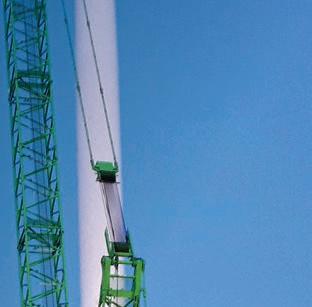





Through wind farms, solar farms and hydrogen plants, we are transforming the way the world sees power.





Scan the QR code to find out more!


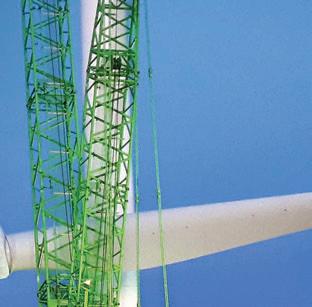
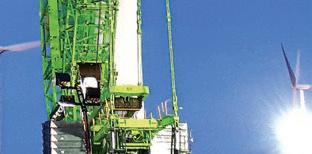


Empowering Industries. Building Futures. One lift at a time.


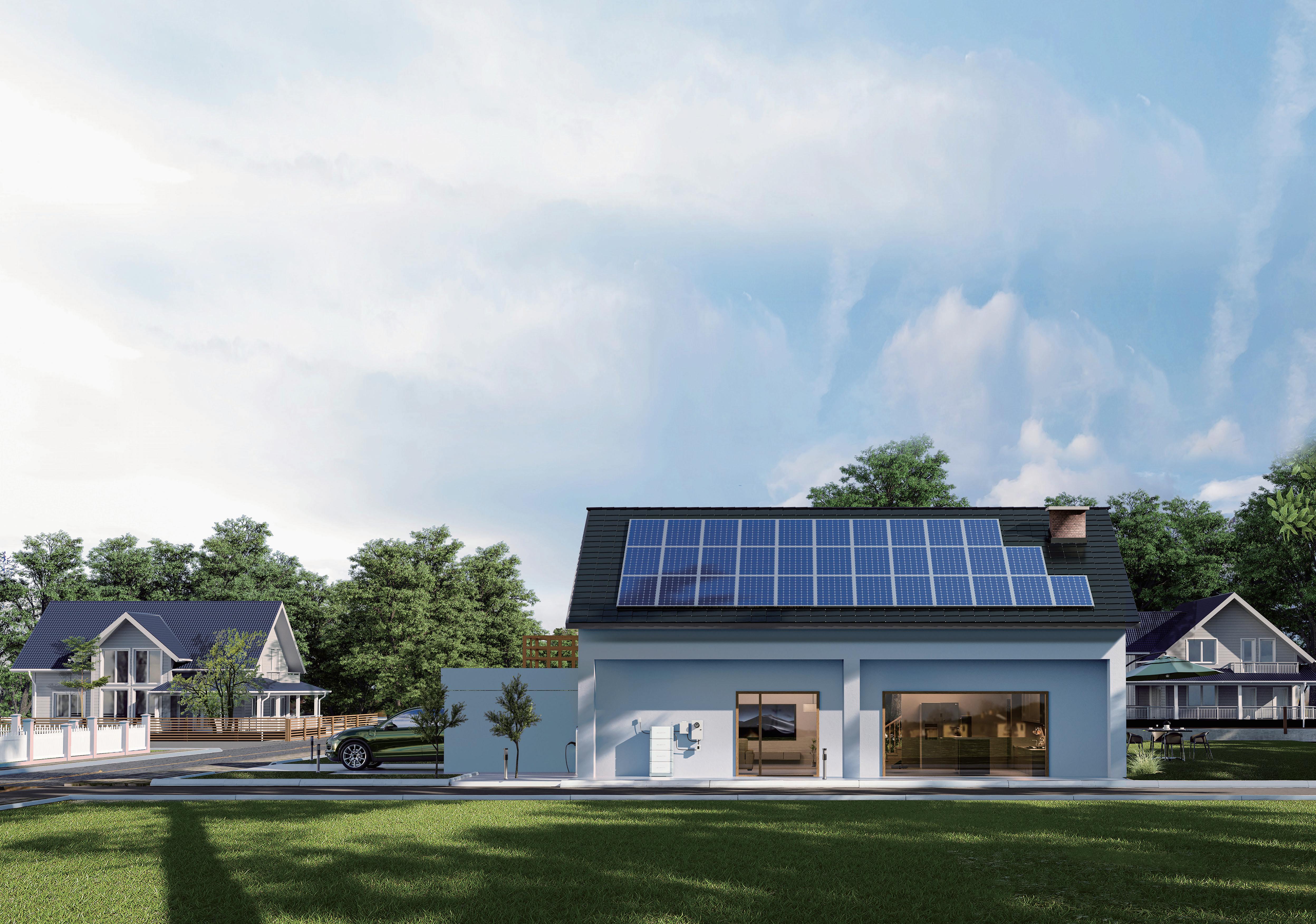
Australia is taking a significant step towards unlocking the potential of offshore wind energy, with the Federal Government granting and offering the first feasibility licenses for projects off the coast of Gippsland, Victoria.
The move represents a major milestone in the development of the country’s nascent offshore wind industry, which is a crucial component in achieving a sustainable and reliable energy future.
In a joint announcement on Monday, Climate Change and Energy Minister Chris Bowen along with Victorian Minister for Climate Action and Energy Lily D’Ambrosio
revealed that six potential projects have been granted feasibility licenses, allowing them to commence detailed assessments, including environmental studies and management plans.
Among the companies awarded licenses are High Sea Wind, Gippsland Skies, Blue Mackerel North, Kut-Wut Brataualung, Ørsted Offshore Australia 1, and Star of the South Wind Farm.
The government intends to grant another six licenses, subject to consultation with First Nations groups.
The proposed projects, if proven feasible, could generate a staggering 25
gigawatts (GW) of electricity – enough to power the Gippsland region’s annual industrial consumption 100 times over or more electricity than the entire state of Victoria generated last year.
“Granting feasibility licenses is the next step to helping deliver a new clean energy industry for Australia, as well as futureproofing energy security and reliability for Victoria,” Bowen said.
D’Ambrosio highlighted the role these projects will play in helping Victoria meet its renewable energy targets, including at least 2GW of offshore wind energy generation by 2032 and 9GW by 2040.

Powerlink has successfully completed the connection works for Queensland’s second Renewable Energy Zone (REZ), paving the way for the state’s largest onshore wind farm to start supplying clean energy to the grid.
The project involved the construction of two 330 kilovolt (kV) switching stations, 65km of new 330kV transmission lines, and 165 towers. Once fully operational, the MacIntyre Wind Precinct will have the capacity to power up to 700,000 homes with renewable wind energy.
“This is a significant milestone on one of Powerlink’s flagship projects, with the MacIntyre Wind Farm being the first stage in our Southern Downs Renewable Energy Zone,” Powerlink Chief Executive Paul Simshauser said.
“We are proud to be partnering with ACCIONA Energia to connect this worldclass project to our transmission network, supporting the state’s renewable energy targets and creating jobs and economic benefits for the region.”
The completion of Powerlink’s connection works means the MacIntyre Wind Farm, owned by ACCIONA Energia, is now ready to be connected to the grid. The first wind turbines are expected to start supplying power in stages throughout 2024 and 2025 as the wind farm undergoes testing and commissioning.
“This milestone is a major achievement as part of Queensland’s energy transition,” ACCIONA Energia Managing Director Brett Wickham said.
“Powerlink have been outstanding partners on this project to connect the biggest wind farm in the southern hemisphere into the electricity grid.”
The connection works included the installation of 165 transmission towers, 690km of transmission line, 125km of fibre optic cable, and supported 220 jobs, with 11 local suppliers engaged.
“Queensland is the place to be for renewable energy projects,” Wickham said.
“With great policy, partners and plans, Queensland leads the way in the energy transition, creating jobs and developing regions in the process.”


Researchers at the University of Adelaide have made a major breakthrough that could lead to lithium-sulphur batteries capable of fully charging in less than five minutes instead of several hours.
The team led by Professor Shizhang Qiao examined the sulphur reduction reaction that governs the charge-discharge rate of lithium-sulphur batteries. They investigated various carbon-based transition metal electrocatalysts like iron, cobalt, and nickel during this pivotal reaction.
“Reaction rates increased with higher polysulphide concentrations, as polysulphide serves as the reactive intermediates during the sulphur reduction reaction,” Qiao, an ARC Australian Laureate Fellow, said.
The researchers designed a nanocomposite electrocatalyst comprising a carbon material and cobalt-zinc clusters.
When used in a lithium-sulphur battery, this electrocatalyst achieved an exceptional power-to-weight ratio of 26,120
watts per kilogram of sulphur.
“Our research shows a significant advancement, enabling lithium-sulphur batteries to achieve full charge/discharge in less than five minutes,” Qiao said.
According to University of Adelaide, current lithium-sulphur batteries suffer from slow charge rates, typically requiring one to ten hours for a full charge cycle.
The new findings published in Nature Nanotechnology provide the first comprehensive solution to this problem.
“Our breakthrough has the potential to revolutionise energy storage technologies and advance highperformance battery systems for various applications,” Qiao said.
The high-power capabilities make these next-gen lithium-sulphur batteries wellsuited for applications like electric vehicles and consumer electronics that require rapid charging and discharging. They could also enhance large-scale energy storage for grid applications.


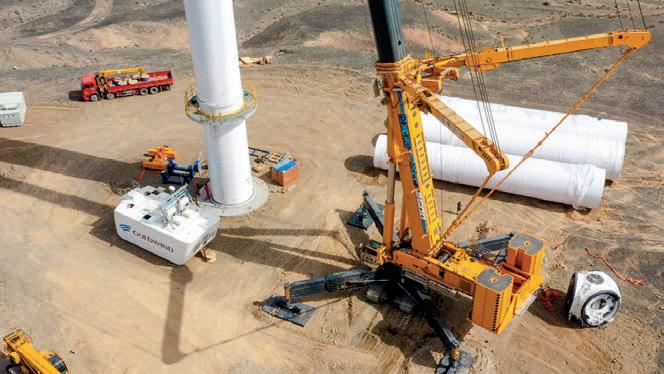

South Australia is empowering low-income and vulnerable households to benefit from cheaper, renewable energy through a new community battery program.
The State Government announced the locations for two pilot community battery installations in Magill and Edwardstown that will service 600 eligible households.
Funded by a $1 million Federal grant, the emPowering Magill and emPowering Edwardstown batteries will allow participants to lower their annual electricity bills by as much as $562 based on current prices.
The 150 kilowatt (kW)/405 kWh batteries will store excess renewable energy from the grid when supply is abundant. This stored power can then be discharged at night or during periods of high demand, similar to household battery systems but shared among the community.
In addition to reducing costs, the community batteries will support more rooftop solar installations, lower emissions, and improve grid stability by managing fluctuations in energy supply.
Housing SA tenants living near the Magill and Edwardstown batteries will be invited to voluntarily join the program by
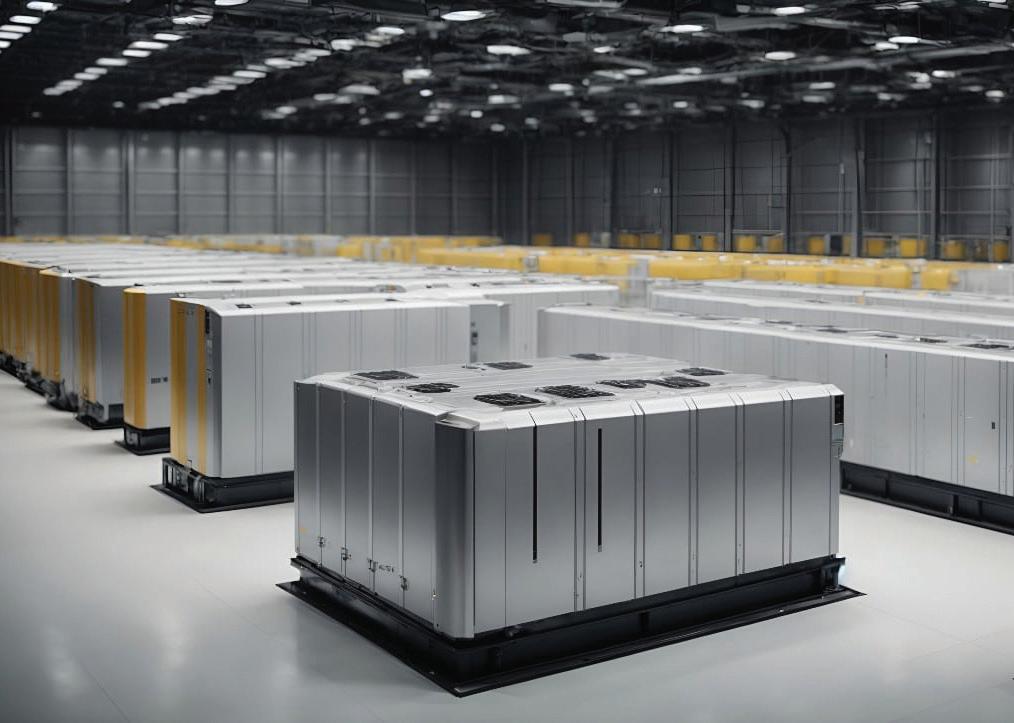
signing up with retailer Energy Locals, which is offering a 25 per cent discount below the Default Market Offer.
Tenants closest to each battery site will receive the initial opportunity until 300 households per location have signed up. Tesla will operate the battery systems as part of the South Australian Virtual Power Plant.
Construction on the $2 million battery
projects is expected to commence in the first half of 2024, with the program aiming to extend the benefits of renewable energy technologies to vulnerable families struggling with power costs.
“This mirrors how household solar and batteries function but shares those benefits more widely with families who need it most,” the government said in a statement.
The Australian Renewable Energy Agency (ARENA) has announced $1.67 million in funding for a feasibility study into an ambitious large-scale renewable energy and hydrogen project in Western Australia’s East Kimberley region.
The $3.33 million Phase 1 study will assess plans to generate over 1000 megawatts (MW) of solar power paired with 850MW of electrolysis capacity to produce 50,000 tonnes per annum of renewable hydrogen. The hydrogen would then be transported to Wyndham and combined with hydropower to produce around 250,000 tonnes of renewable ammonia annually for domestic use and export.
If developed, the estimated $2.7-3.2 billion facility would be one of the world’s largest renewable hydrogen and ammonia production hubs.
What sets this project apart is that it is being driven by a partnership between First Nations corporations and groups –MG Corporation, Balanggarra Ventures, Kimberley Land Council, and climate investment firm Pollination. Each holds an equal stake, ensuring the
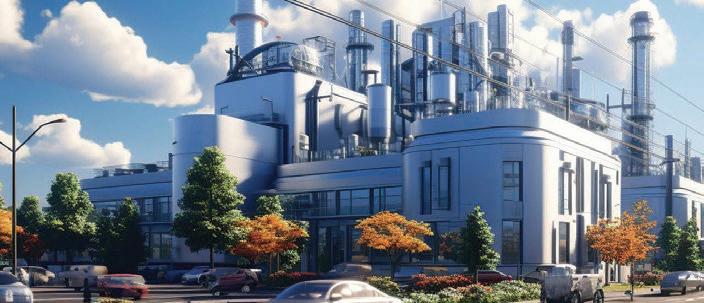
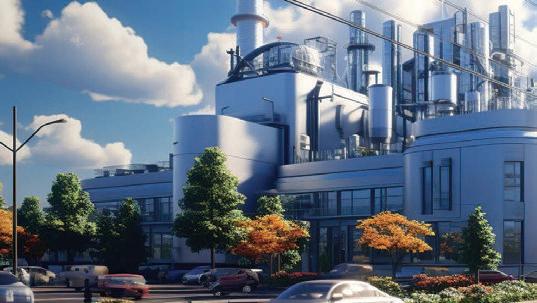
development is majority First Nationsowned during design.
ARENA CEO Darren Miller said the agency will work with the Aboriginal Clean Energy Partnership to share learnings and build capacity, describing it as the type of First Nations-led project needed for Australia’s renewable energy superpower ambitions.
“This project will pave the way for First Nations-led renewable developments, and ARENA will ensure lessons from East Kimberley inform future
renewable projects,” Miller said.
The partnership model aims to give Traditional Owners a leadership role and direct stake in the energy transition, rather than just being stakeholders.
Kimberley Land Council Chairman Anthony Watson said it demonstrates economic prosperity can go “hand in hand” with Indigenous empowerment and environmental care.
The feasibility study of the project has commenced and will take around 5 months to complete its initial phase.
The Australian Government has announced a major $840 million investment to fund the country’s first combined rare earths mine and refinery in the Northern Territory.
This ambitious project aims to create over 300 new jobs in the region and position Australia as a global leader in the ethical and sustainable production of critical minerals essential for renewable energy and defence technologies.
The rare earths mine and refinery will be operated by Australian mineral exploration company Arafura, located 125 km north of Alice Springs. During construction, over 200 jobs will be created, with an ongoing 125 full-time positions once operational, including a target of 20 per cent local Indigenous employment.
Rare earth elements are crucial components used in powerful magnets for electric vehicles, wind turbines, robotics, and electronics like mobile phones. With this refinery, Australia can capture more value from its abundant critical mineral deposits at home rather than just exporting the raw materials.
“This project is a major vote of confidence in the Northern Territory,” Prime Minister Anthony Albanese said.
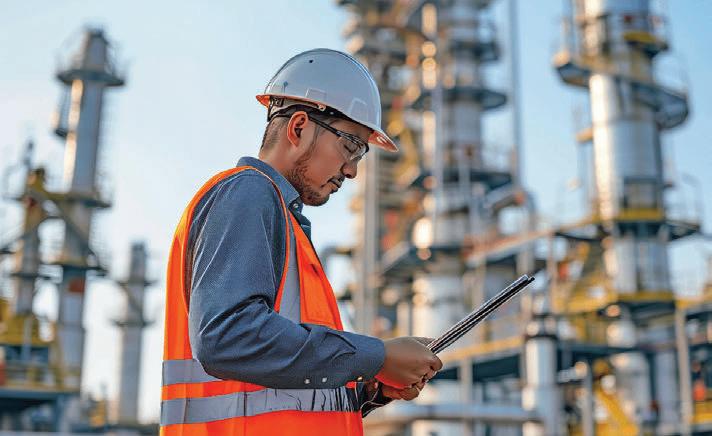
“The road to net zero runs through our resources sector, and developing our critical minerals will play a key role.”
The government funding will help unlock further private investment in the project. In a press release the government highlighted Australia’s push to become a renewable energy superpower by 2030, aided by
responsible mining of the critical minerals required for clean energy technologies to reduce emissions.
Northern Territory leaders praised the economic opportunities the project brings, describing it as an important step towards the territory’s goal of achieving a $40 billion economy by 2030 driven by its world-class critical minerals deposits.
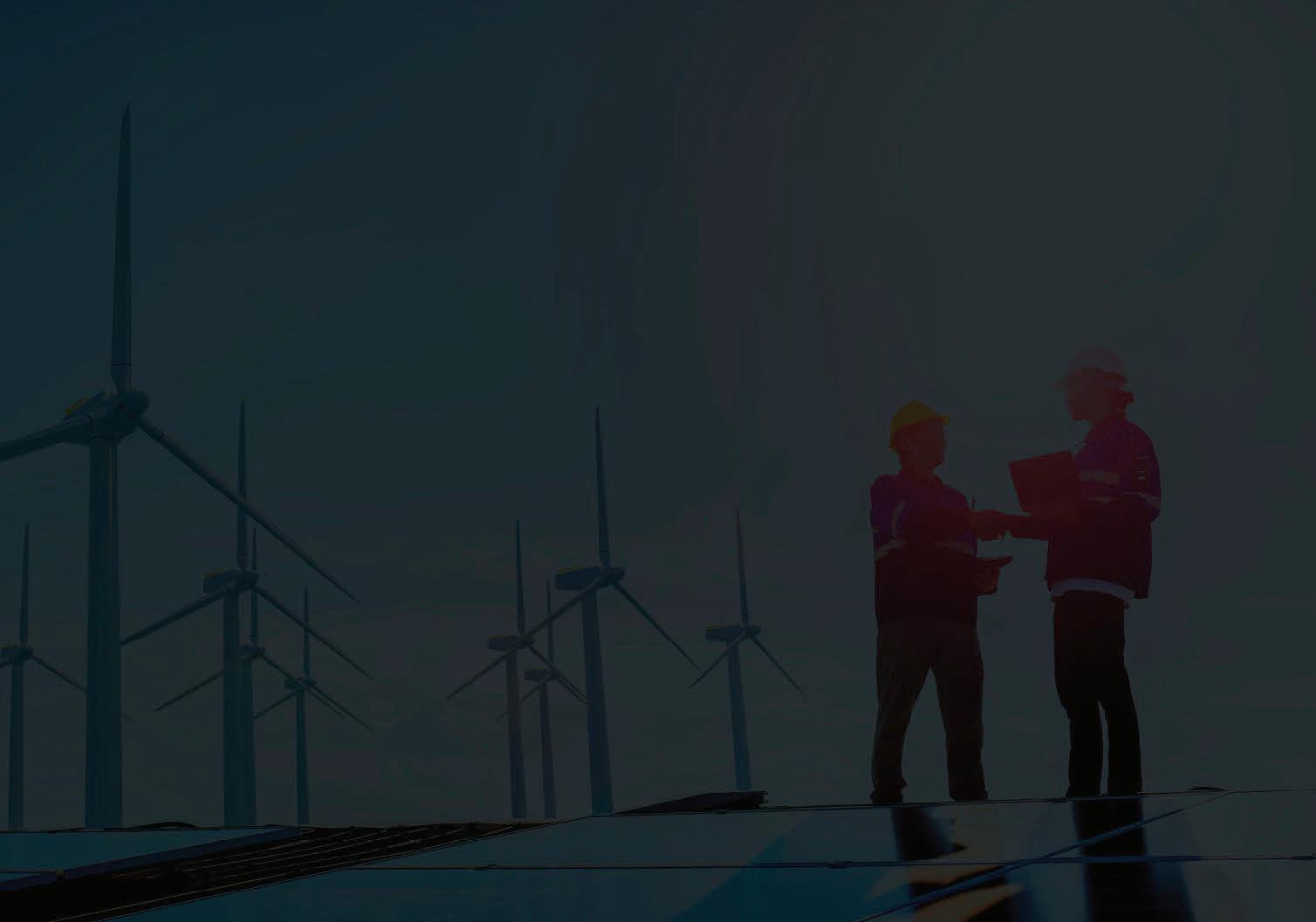




The Federal Government’s plan to transition to renewable energy sources like solar and wind is helping to stabilise electricity prices for Australian households and businesses after the biggest global energy crisis in 50 years.
According to the draft Default Market Offer (DMO) released by the Australian Energy Regulator, the benchmark for residential and small business electricity bills is trending downward, with reductions of up to nearly 10 per cent for some small businesses and over 7 per cent for some households in NSW, southeast Queensland, and South Australia.
The positive pricing news comes as the government aggressively implements its 82 per cent renewables by 2030 plan. Last year alone, there was a record $4.9 billion invested in batteries and large-scale energy storage, with 27 large batteries under construction. Over 337,000 rooftop solar systems were also installed across the country, adding 5.9 gigawatts of new renewable generation capacity.
Federal Climate Change and Energy Minister Chris Bowen said the government’s renewables roadmap aligns with independent advice that firmed renewable sources like solar, wind, batteries and pumped hydro provide the lowest-cost, reliable path forward as aging coal plants retire over the next decade.
“The Albanese Government is getting on with the job of delivering a firmed renewable energy system to benefit all Australians,” Bowen said.

The Victorian Government is throwing its support towards the establishment of an Australian-first electric aircraft development centre in Gippsland in collaboration with Dovetail Electric Aviation.
The Dovetail Electric Aviation Development Centre at the Latrobe Aerospace Technology Precinct in Latrobe Regional Airport is expected to create around 90 highly skilled jobs in the state over the next five years, advance sustainable air travel, and bolster Victoria’s clean energy sector.
According to the Victorian Government, Dovetail will retrofit regional aircraft with batteries and hydrogen propulsion to enable zero-emission flights, lessening aviation’s environmental impact. The company’s research and potential flighttesting capabilities will help transition the local aviation industry to clean energy sources.
“Securing Dovetail’s footprint in the precinct is another win for advanced air mobility in Victoria and our clean energy economy,” State Economic Growth Minister Tim Pallas said.
“It will make a valuable contribution to our research and development sector.”
State Jobs Minister Natalie Hutchins said the government is “backing the clean energy sector and advanced air mobility supply chain to create more highly skilled jobs as we lead the decarbonisation of aviation”.

A Deloitte Access Economics report found the advanced air mobility sector could increase Victoria’s gross state product by $2.8 billion over 20 years and create 1300 annual jobs.
“We are honoured to receive Victorian government support which will accelerate our R&D efforts toward a sustainable, efficient aviation future,” Dovetail CEO David Doral said.
Latrobe City Council Mayor Darren Howe welcomed “the collaboration with emerging technologies” to “establish new industry and investment” in advanced air mobility.
Member for Eastern Victoria Harriet Shing said the centre “will deliver innovations for aviation, create regional jobs and contribute to emissions reduction goals”.
South Australia recently announced its acceleration of the transition to renewable energy as part of its plans to reindustrialise the Upper Spencer Gulf region.
Several major renewable projects were unveiled at the recent Major Economic Summit held in Whyalla, Port Augusta, and Port Pirie.
The Port Bonython Hydrogen Hub is SA’s first large-scale clean hydrogen production precinct. Five major companies – Amp Energy, Fortescue Energy, the Hydrogen Utility, Origin Energy and Santos – have signed development agreements to use the facility.
From 2025 onwards, the SA Government’s $500 million investment into green hydrogen is expected to create thousands of jobs across renewable projects, a hydrogen export industry, and production and storage near Whyalla.
Accelerating its decarbonisation drive, SA will bring forward its renewable energy target by three years to source 100 per cent of electricity generation from net renewable sources by 2027.
Excess energy from large wind and solar farms will be stored to provide consistent supply and grid stability while pushing down power prices.
A significant partnership has been struck between resources giant BHP and the SA
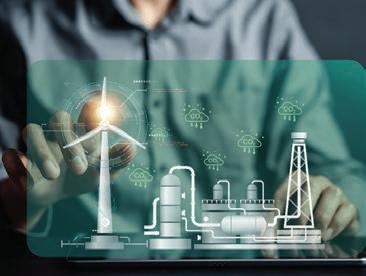
Government’s upcoming technical college in Port Augusta.
Construction on the new vocational college, part of a $208 million program, is due to start soon. It is scheduled to open in 2025, equipping students with in-demand skills for the renewable energy and resources sectors.
According to the SA government, the raft of renewable initiatives aims to leverage the state’s abundant solar and wind resources, valuable minerals like copper, and existing industrial capabilities to transform the Upper Spencer Gulf into an economic powerhouse driven by clean energy and green manufacturing.
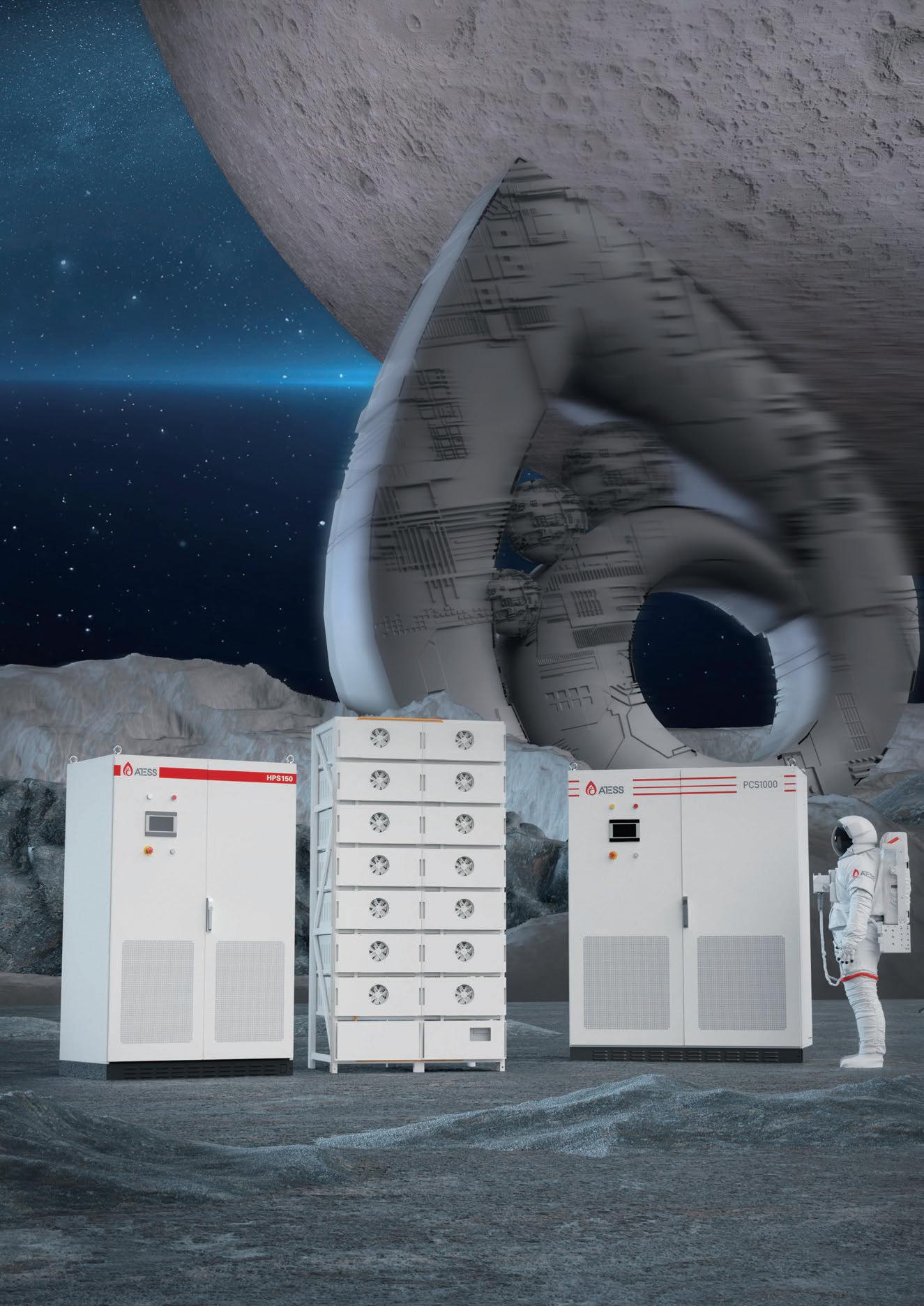
Peak shaving
Backup power supply
Diesel generator replacement
Frequency modulation
Australia has undergone unprecedented growth in the small-scale renewables sector in recent years. Chair of the Clean Energy Regulator David Parker takes a look at what is needed to improve integrity of the industry.
Athird of Australian households have solar panels on their roofs and an estimated 12 per cent of all our electricity generation now comes from rooftop solar.
The continued success of this transition has been underpinned by the solid reputation of the rooftop solar industry where a vast majority of the participants are doing the right thing. It is imperative that we continue to uphold the integrity of this sector to maintain consumer confidence.
In the face of the rapid expansion, the
The CER now has more effective powers to monitor and enforce compliance with respect to installers, designers, retailers, and manufacturers.
Clean Energy Regulator (CER) conducted a review in 2020 into the rooftop solar photovoltaic (PV) sector and made 13 recommendations to improve the integrity of the Small-scale Renewable Energy Scheme (SRES) regulatory framework and better protect consumers. We’ve been working hard since to implement the reforms.
To maintain integrity and weed out non-compliance within particular areas of the industry, the review recommended the CER have greater control over installer and
designer accreditation arrangements.
As a result, Solar Accreditation Australia was announced as the new solar installer and designer accreditation scheme operator in February this year. The not-for-profit organisation was established to provide accreditation for the sector’s workforce of over 9000. Accreditation ensures that systems are installed by qualified electricians who are trained, competent and operate with integrity. Work is also progressing with a solar panel and inverter product listing body under the SRES.

The SRES reforms also ensure greater accountability for any misconduct by scheme participants. Providing false or misleading information to create small-scale technology certificates (STCs) contravenes the Renewable Energy (Electricity) Act 2000 and can result in prosecution for fraud.
The CER now has more effective powers to monitor and enforce compliance with respect to installers, designers, retailers, and manufacturers. This includes powers to declare installers, designers, retailers, and components ineligible to participate in the SRES.
We will not tolerate those who are unwilling to do the right thing. The CER recently declared two solar PV installers ineligible to install solar systems under the SRES for 12 months for not meeting onsite attendance obligations. Any systems supervised or installed by these installers over the year will not be eligible to receive STCs. These persons have also been suspended by Solar Accreditation Australia. Legal requirements apply to all solar
PV installers, designers, retailers, agents, manufacturers, and importers wanting to claim STCs. Inverter serial numbers must be provided to the CER to ensure only eligible components are installed. Installers are also required, by law, to have and provide evidence that they were present during the beginning, middle and end of a solar installation. And solar retailers must provide formal written statements that the systems sold comply with all relevant standards. They can be held accountable for poorly performing systems.
As part of the reforms, the CER also introduced a solar panel testing program to further improve integrity in the SRES. We commissioned an independent laboratory to test 567 solar panels comprising of 18 models from 14 brands.
This represented approximately 71 per cent of eligible panels installed on Australian rooftops from January to March 2022.
The results were heartening. The panels achieved a 99.5 per cent pass rate in visual
inspections, 100 per cent in performance under standard test condition, 89.9 per cent in electroluminescence and 99.95 per cent pass rate in wet leakage tests. The testing program aims to verify compliance with Australian standards, ensuring eligibility for STCs.
These measures give consumers confidence they are buying components that meet Australian standards that are backed by manufacturer warranty.
Australians are increasingly taking charge of their energy needs and helping drive the country’s renewable energy transition - the rooftop solar sector continues to grow in Australia with at least 3.1 gigawatts of capacity expected in 2024.
This sector will play a vital role as we transition to greater penetration by renewable electricity. Improving the regulatory framework that supports the rollout of solar means safety and integrity are not lost along the way, and that Australian consumers continue to be protected.

Let’s look at the positives first. We know the scale of the task ahead of us – how much generation and storage we need in order to meet the Federal Government’s target of 82 per cent renewables by 2030, Clean Energy Council Chief Executive Kane Thornton writes.

As a response to the recent slowdown in new investments in renewables, particularly in wind, the Government is putting new financial incentives in place in the form of the expanded Capacity Investment Scheme (CIS) and others, to respond to gamechanging international policies such as the US’s Inflation Reduction Act.
At the time of writing, we are eagerly anticipating what will hopefully be a transformative Federal Budget for clean energy in Australia and awaiting the first tender for the expanded CIS.
But financial incentives and market movements are not the sole drivers of the energy transition.
Two of the most significant challenges, and crucially also opportunities, facing the transition are social licence and biodiversity protection.
How do developers meaningfully communicate and work with communities, including Traditional Owners, to garner support for renewable energy projects?
And how do we as an industry ensure the benefits of the transition to renewables are achieved alongside protection and support for Australia’s unique natural environment?
Positive community engagement is vital for the success of any project.
Developers who invest time and effort to build relationships with communities based on trust and respect are those most likely to be embraced by those communities.
Recent research from the CSIRO shows that the vast majority of Australians support renewables, undermining claims in some quarters of a lack of community support.
The report also showed that when people understand the role of infrastructure in the energy transition, they are more likely to accept and even support developments. Indeed, a review of community engagement by the Australian Energy Infrastructure Commissioner included a recommendation that governments lean in on the need to better communicate to the public why the energy transition is needed and what is involved.
It is for developers to ensure that the benefits of clean energy projects, including boosts to local economies and jobs, are shared with local communities wherever possible, that people understand what these projects are for and can bring, and that any disruptive elements are minimised.
By engaging meaningfully, educating, and building lasting relationships, the transition to renewables will build on the
support it already has. That support will allow the transition to proceed in the short timescale required.
Renewables and conservation
Planning and environmental approvals for renewable projects, particularly wind farms, are often delayed because there isn’t enough scientific understanding of potential risks to biodiversity, including to endangered species and how those species interact with wind turbines.
The longer it takes to define these things, the worse climate change gets; climate change, of course, being one of the most significant drivers of biodiversity decline.
The issue is not so much that some projects have been rejected or delayed on environmental grounds.
That can and should happen under a robust planning system. The issue is that those environmental grounds are inconsistent across Australia, and developers do not have the clarity or oversight they need to plan projects and progress them in the right manner.
Work is being done to revise environmental laws and the criteria for impact assessments, the objective of which should be to integrate biodiversity and climate considerations meaningfully into those processes. At the Clean Energy Council, we are committed to contributing to those revisions. Renewable energy and nature positivity are two sides of the same coin and should not be considered otherwise.
It is essential to properly consider the impacts of the renewable energy transition on biodiversity, but this should be done in a way
that considers how best to make renewables work with nature by supporting restoration and conservation efforts while crucially driving down greenhouse gas emissions.
Although projects are not yet under construction in Australia, offshore wind is fast-approaching, reflecting a global boom in that industry. Indeed, at the time of writing, the first six feasibility licences for offshore wind farms have just been announced.
Offshore wind farms, combined with other forms of generation, will play an essential role in Australia’s future clean electricity grid.
This form of generation comes with its own set of environmental and community concerns, but crucially there is time to address those concerns before construction begins on any projects.
Learnings around social licence and biodiversity specific to onshore wind farms should inform the way the offshore wind industry is planned in Australia, with due concern and research for environmental impacts and appropriate levels of engagement, transparency and education for communities.
We have already seen false and scientifically unproven accusations being levelled at the development of wind farms,
including that they kill whales, evidence for which simply does not exist. This highlights the importance of doing the work upfront to support this industry and ensure we can conserve nature alongside it.
Meeting targets the right way
The scale of what is needed to accelerate the transition in time to meet the Federal Government’s target of 82 per cent renewables by 2030 is immense. The level of infrastructure development needed, coupled with the critical areas of social licence and biodiversity protection, to mention but two, can feel overwhelming.
And that’s without going into detail on how essential it is to ensure the technologies and natural resources used to build the transition are managed and extracted as sustainably as possible.
To meet that 82 per cent target and ultimately transition Australia to 100 per cent renewables and beyond, collaboration is needed.
The goal of embracing renewables is to decarbonise our economy and protect the planet. It would incredibly shortsighted if the acceleration of renewables were permitted to harm the very things it is trying to protect. It is critical we move quickly, but that doesn’t mean we can be careless.
Kane Thornton has more than a decade of experience in energy policy and leadership in the development of the renewable energy industry. His column is a regular feature in ecogeneration, where he analyses industry trends and explains the impacts of federal and state renewable policies on the energy sector.



Gain new skills for growing opportunities in the renewable energy market. Electricians and engineers interested in upskilling or gaining accreditation can tailor their training to suit their career goals at Holmesglen Institute’s Renewable Energy Centre of Excellence. Industry experts deliver our nationally accredited renewable energy short courses with online and face-to-face hands-on practical workshop sessions. You can study: •Grid Connected PV systems•Battery Storage•Stand-Alone Power Systems

Multiple start dates available throughout the year at our Moorabbin campus. Scan the QR code to find out more, or call 1300 639 888 to apply now.



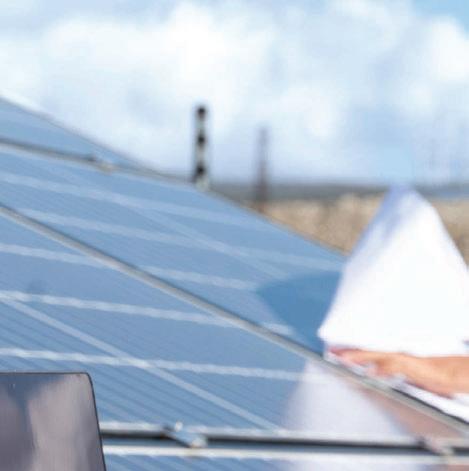
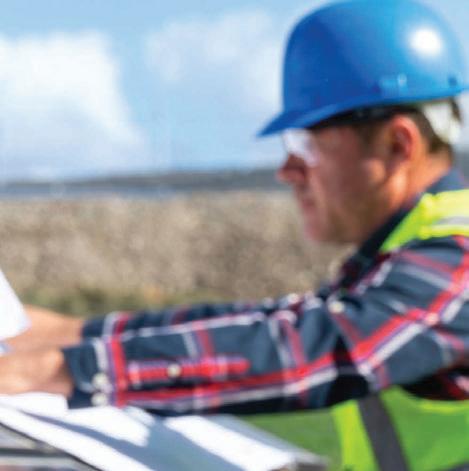



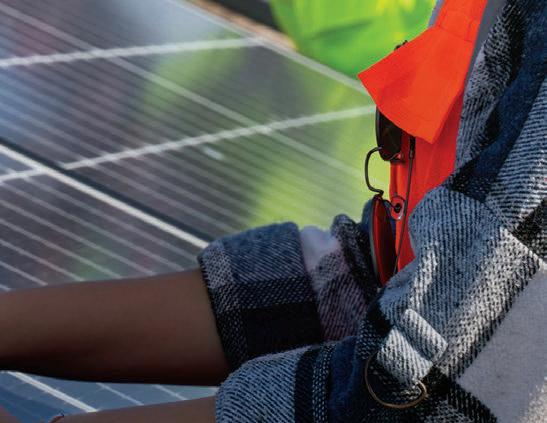

A key role the Clean Energy Council undertakes is maintaining a list of approved inverters, batteries and PV modules that meet Australian and international standards. The products lists are a requirement of several electricity grid operators (DNSPs) and Federal and State Government rebate programs, including the Small-scale Renewable Energy Scheme.
Achange to approved PV modules is coming into effect soon and its important the industry is ready.
From 1 October 2024, all new solar installations will need to use modules that meet 2021 standards. It’s a big change to navigate which is why we’ve set a long changeover period and introduced extension requests to help businesses that may be facing stock surpluses.
The CEC is accepting extension requests for review on a case-by-case basis until 15 July 2024 to support industry with 2016 stock clearance.
Find out everything you need to know to prepare for the change below.
Requesting an extension
• If an extension is required, manufacturers or agents acting on behalf of a manufacturer, will need to submit an extension request online by 15 July 2024 for the CEC to review. If you have submitted an application or received an outcome, please inform your customers.
• If you are an importer, stock keeper or retailer exploring options to manage 2016 stock, please talk to the manufacturer or agent to understand whether they are applying for an extension. If your manufacturer or agent is not applying and you require an extension, please notify the CEC via the same online form. Please note this is not considered an application in the first instance. the CEC will also contact the manufacturer before taking any further action.
• The CEC may consider extensions for products listed to the 2016 version that can show compliance to the 2021 version. The CEC will offer an estimated time for completion once we start receiving the applications from the industry.
Further information is available at cleanenergycouncil.org.au/moduleschange.
Manufacturer or agent acting on behalf of manufacturers
You must apply for re-certification as soon as possible, as it can take two to three months. Once recertified, you must submit your application with the CEC with a valid certificate for PV modules to remain on the CEC Approved Products list effective 1 October 2024 as per IEC 61215:2021. Work closely with your supply chain to clear obsolete stock when importing PV modules certified to IEC 61215:2016.
retailer, installer or stock-keeper
You must continue to clear existing stock certified to the 2016 version of IEC 61215. No additional stock should be imported or purchased unless you are certain it can be installed prior to the expiry date.
If the PV module label shows the module is compliant to the 2016 version of IEC 61215, then the module must be installed before the CEC listing expiry date for the 2016 version. Check the expiry date of your modules at cleanenergycouncil.org. au/moduleslist. If you are unsure of which standard the module is compliant with, please contact your supplier/ manufacturer.
If you are exploring options to manage 2016 stock, talk to your manufacturers to understand whether they are applying for an extension. If your manufacturer or importer is not applying for extension and you require support, you may submit an extension request by 15 July 2024.
Electrical workers in various jurisdictions must ensure that products installed are compliant with the electrical safety legislation specific to each jurisdiction. If you have concerns about the acceptability of a product, you should seek clarification from the local regulator.
When AS/NZS 5033:2021 was published and became mandatory in May 2022, it brought changes to the requirements for
solar panels (PV modules) that aimed to align with international standards set by the International Electrotechnical Commission. AS/NZS 3000 references AS/ NZS 5033 but does not reference an edition of IEC 61215 and IEC 61730, which is why we must adhere to the latest edition of the Standard.
In most cases, following publication of Australian Standards for installation there is a six-month transition period. After consultation with regulatory bodies and testing labs, it was clear that six months did not provide industry with enough time. It was decided that it would be in the best interest of the industry to wait until the testing labs were ready following which the industry was given 14 months’ notice of the standards change. We recognise that there has been a significant shift across the Australian and international solar industry and that the 1 October deadline may still create significant challenges for some, which is why we have introduced the option for individual extensions requests to the CEC.
For more information, email products@ cleanenergycouncil.org.au
• All PV modules must be certified to the 2021 version of the IEC 61215 Standards and have documentation submitted to the Clean Energy Council to remain on the product list before 1 October 2024.
• PV modules not qualified to the updated standard and listed as Clean Energy Council approved will not be eligible for STCs and state/territory rebates after this date.
• No additional 2016 stock should be imported or purchased unless you are certain it can be installed prior to 1 October 2024 or the expiry date as per Clean Energy Council list.
• Businesses must continue to clear existing stock certified to the 2016 version of IEC 61215.
• Please refer to product expiry date listed on the Clean Energy Council website prior to purchasing further stock.

New South Wales is rapidly accelerating its transition to renewable energy, with a flurry of major project approvals across the state in recent years. ecogeneration takes a look at some of the projects making tracks.
This renewable energy boom is set to dramatically increase New South Wales’ generation capacity from wind, solar, and battery storage, helping to reduce emissions and provide cheaper, cleaner power for homes and businesses.
Several landmark renewable energy projects have been given the green light in NSW, signalling the state’s commitment to a clean energy future.
In March 2024, the Federal Government approved the 840-megawatt (MW) Sandy Creek Solar Farm near Dunedoo, which will generate enough electricity to power 200,000 homes.
This is just one of 45 major clean energy developments approved by the Federal Government since the Labor party took office.
At the state level, the NSW Government approved 18 large-scale renewable projects in 2023 alone, including wind farms, solar farms, and large-scale battery facilities.
This included the 1.5-gigawatt (GW) Yanco Delta wind farm, set to be the largest in Australia once operational. In total, the approved projects have a combined generation and storage capacity of 7.6GW.
The renewable energy pipeline continues to grow, with 29 additional projects currently navigating the planning process and around 70 more anticipated to submit applications soon.
Projects like the proposed Pottinger Energy Park, a $2 billion joint venture between AGL and Someva Renewables, underscore the ambition. This 2GW hybrid project would include a wind farm, solar farm, and 500MW/2000 megawatt-hour
(MWh) battery storage system.
The NSW Government has also taken steps to streamline the approvals process, releasing new guidelines covering wind farms, transmission, and community benefit-sharing.
State Minister for Climate Change and Energy Penny Sharpe noted that NSW is now “about halfway towards our 2030 renewable generation target, and over a quarter of the way there on our longduration storage target.
To support this rapid renewable energy buildout, the NSW Government is also investing heavily in upgrading the state’s electricity grid infrastructure. This includes the development of Renewable Energy Zones (REZs), which are dedicated areas optimised
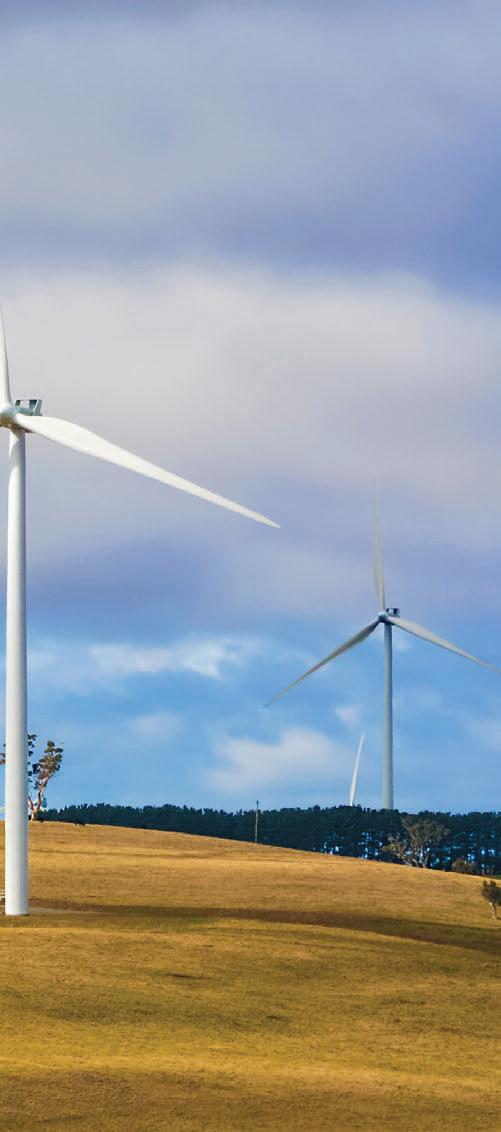
for large-scale renewable energy projects.
One such REZ is the South West REZ, where the massive 1.5GW Yanco Delta wind farm has been approved.
The NSW Government has also declared the Hunter region as Australia’s second offshore wind zone, with the potential to generate up to 5GW of renewable energy - enough to power an estimated 4.2 million homes.
These investments in grid infrastructure are critical to unlocking NSW’s renewable energy potential and integrating large amounts of clean power onto the grid. As aging coal-fired power stations continue to retire, the state needs to ensure there is sufficient renewable generation and storage capacity to replace this dispatchable capacity.
The renewable energy boom in NSW is delivering significant economic and environmental benefits for the state, primarily in regional areas that are

undergoing economic transition.
For example, the Sandy Creek Solar Farm will create up to 600 jobs during construction, along with 10 ongoing operational roles. The Pottinger Energy Park is expected to create up to 800 jobs during construction and 60 permanent positions once operational.
Beyond the job creation, these renewable projects are also making a substantial contribution to emissions reduction. The Yanco Delta wind farm alone is projected to save between 2.8 and 5 million tonnes of emissions each year.
This aligns with NSW’s ambitious netzero targets and the state’s broader strategy to decarbonise its energy sector.
Minister for Planning Paul Scully noted, the renewable energy rollout is “delivering affordable energy to NSW residents while injecting millions into regional economies”.
The Bega Valley Shire Council, for example, has successfully connected its newest solar energy site to the grid, adding to its growing portfolio of distributed renewable assets.
The council’s latest 285 kilowatt (kW) solar installation at the Water and Sewerage Services Operations Depot is expected to generate 300MWh of energy annually – enough to power 40 average Australian homes for a year.
This project qualifies the council for the registration and trading of Largescale Generation Certificates, further
supporting its goal of achieving 100 per cent renewable energy by 2030.
While much of the focus has been on renewable energy for homes and businesses, NSW is also making strides in decarbonising its heavy industry sectors.
A prime example is the Hunter Valley Hydrogen Hub, a commercial-scale green hydrogen manufacturing facility being developed by Origin Energy on Kooragang Island.
The $115 million hub, supported by $45 million in NSW Government funding, will produce green hydrogen through electrolysis, using renewable energy to power the process. This hydrogen will then be used by industrial giants like explosives manufacturer Orica to reduce their reliance on fossil fuels.
The project is expected to create up to 150 direct jobs and 65 indirect construction jobs in the Hunter region, further boosting the local economy.
As NSW Minister for Energy Penny Sharpe stated, “Projects such as the Hunter Valley Hydrogen Hub are vital to decarbonising the industrial sector as we work towards a net-zero future”.
As the state continues to phase out its aging coal-fired power stations, this renewable energy surge will be crucial in ensuring reliable, dispatchable power is available to meet the state’s growing energy needs.


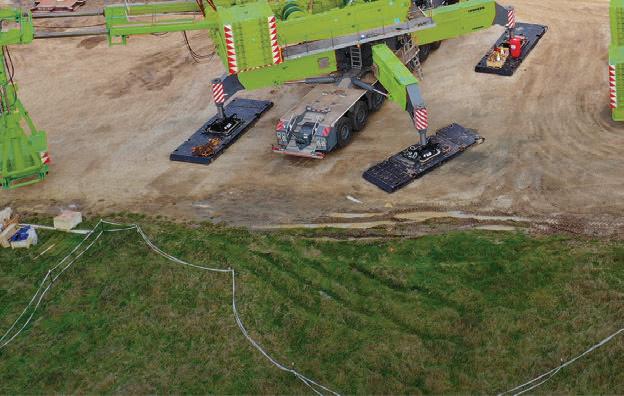

Boom Logistics holds a lengthy history in wind farm construction and maintenance, throughout which it has customised and developed its options to wind farm customers to provide a holistic, all-encompassing service.
With many years of experience in the construction and maintenance of wind farms across Australia, publicly listed crane hire company, Boom Logistics, has developed extensive capabilities in the wind farm and renewables sector. The company has a rich history of successful collaborations with wind turbine OEMs Australia-wide to provide crane and installation packages in excess of 850MW of wind power to date.
Across the years, Boom has established its own dedicated, in-house construction division. This specialised division of the national crane hire company focuses on providing comprehensive wind farm construction and maintenance services through a service delivery model based on operational experience of key resources and fit-for-purpose assets. What this entails for Boom Logistics is in-house construction teams that include the full package of construction supervision, technical delivery and site-based health, safety, and
quality roles working in tandem with a range of in-house services provided.
With its diverse fleet featuring multiple Liebherr LG1750’s purposed for the wind market, supported by a further three 800tonne LTM1750-9.1 mobile cranes focusing on service works, Boom is showing no signs of slowing down its efforts to lift Australia to carbon neutrality. Through its lengthy experience in the wind farm sector, Boom possesses the capacity to draw all assets and equipment from within the Boom Logistics fleet, provide in-house engineering capabilities, provide a dedicated resource pool of mechanical technicians and electrical personnel. Furthermore, throughout all its operations across Australia’s wind farms, OEMs can rest assured that Boom possesses significant in-house capabilities and is appropriately certified, underscored by the provision of its own building licence with and through the Queensland authorities, as well as holding relevant state electrical
contractor certifications. Boom’s mandate is to self-perform by retaining control on the quality and execution strategy, while providing dependency in delivery and program as expected within the demanding wind construction sector.
Throughout its history of working in wind farms, Boom has moved with the market to ensure its fleet is aligned with the increasing service demands at height. The crane fleet is supported by its expanded services beyond construction, with the company specialising in the removal and replacement of wind turbine components such as gearboxes, generators, main bearings, and blades.
Boom’s service does not just end there, however. Indicative of its ability to go above and beyond what can normally be provided by a crane hire company, following the construction of a wind farm, Boom Logistics is able to deliver routine and periodic service as per the specifications provided by the wind turbine OEMs, as


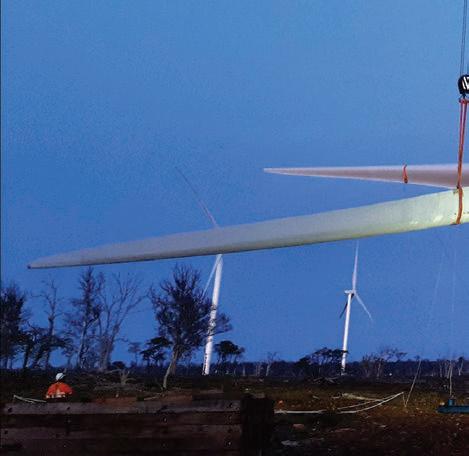

“Throughout its history of working in wind farms, Boom has moved with the market to ensure its fleet is aligned with the increasing service demands at height.”
well as liaising with wind turbine OEMs to develop, maintain, and amend operational procedures to enhance site efficiency, safety, and productivity. In tandem with its ability to provide full in-house engineering requirements, appropriately certified, skilled workers, and nationally spread equipment base, Boom is able to support OEMs and asset owners on both the East and West Coast of Australia.
Boom’s end-to-end wind farm construction and maintenance capabilities have recently been on display with some of its recent projects, as seen in the accompanying photos. Possessing a range of 800-tonne capacity machines, Boom deploys its LG1750 and LTM1750-9.1 to aid in the construction and maintenance of wind farms across the country.
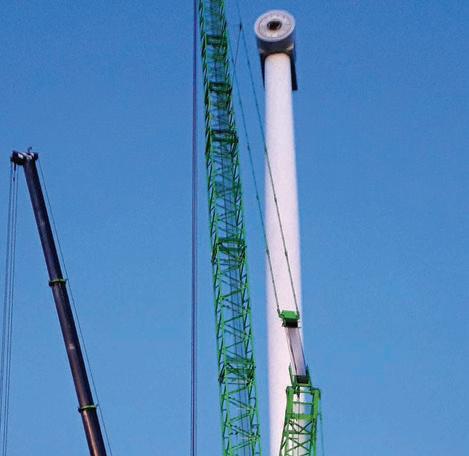
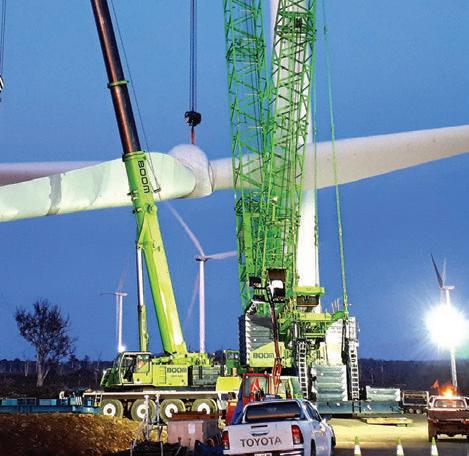
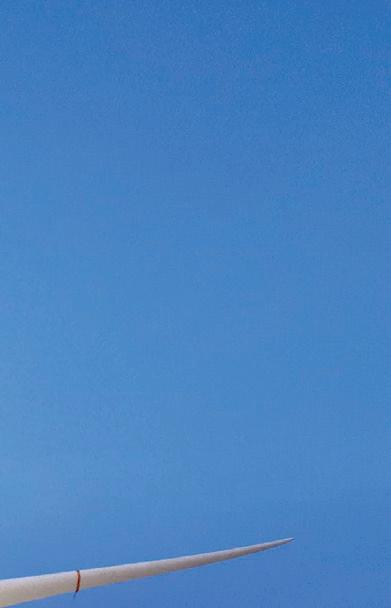
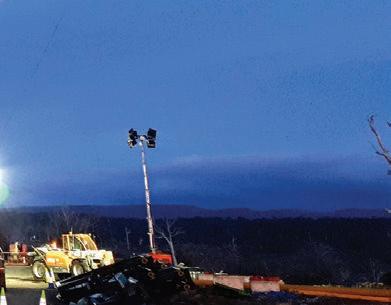
With a maximum lifting capacity of 750 tonnes and unrivalled mobility between WTG’s, the LG1750 possesses the key capability to perform at relevant hub heights across the country, making the crane one of the market’s ideal choices for fast wind farm construction and erection –and, due to increasing demand for capacity at height, will soon dominate wind service and maintenance works. As one of Three Australian owned crane hire companies in Australia to possess an LG1750, Boom is uniquely placed in the wind market.
The 800-tonne capacity LTM1750-9.1, on the other hand proves itself to be most adept at maintenance in the current market, especially due to the crane’s detailed wind speed charts and key capabilities on the 80m-to-115m hub heights where significant market demand exists within Australia. With a maximum hoist height of 156m that is largely driven through crane jib attachments, the nine-axle mobile crane has proven to be a key contributor in
wind turbine maintenance: a vision Boom forecast, positioning itself with three identical cranes uniquely spaced nationally to provide maintenance services in alignment with market demands. As seen, Boom provides a focus on self-performance, which includes mobilisation of their own ancillary support equipment, including cranes and heavy haulage to support their constriction and service works.
With its vast experience gained over the past years of helping to construct some of Australia’s most significant wind farms, Boom Logistics has gained deep industry nous and streamlined its wind farm division to be able to deliver holistic services to its wind farm clients. Because of its all-encompassing service, the company’s ability to provide a comprehensive, highquality, end-to-end package positions it competitively, earning the trust of customers seeking reliable solutions based on BOOM’s proven track record in successfully completing diverse projects.
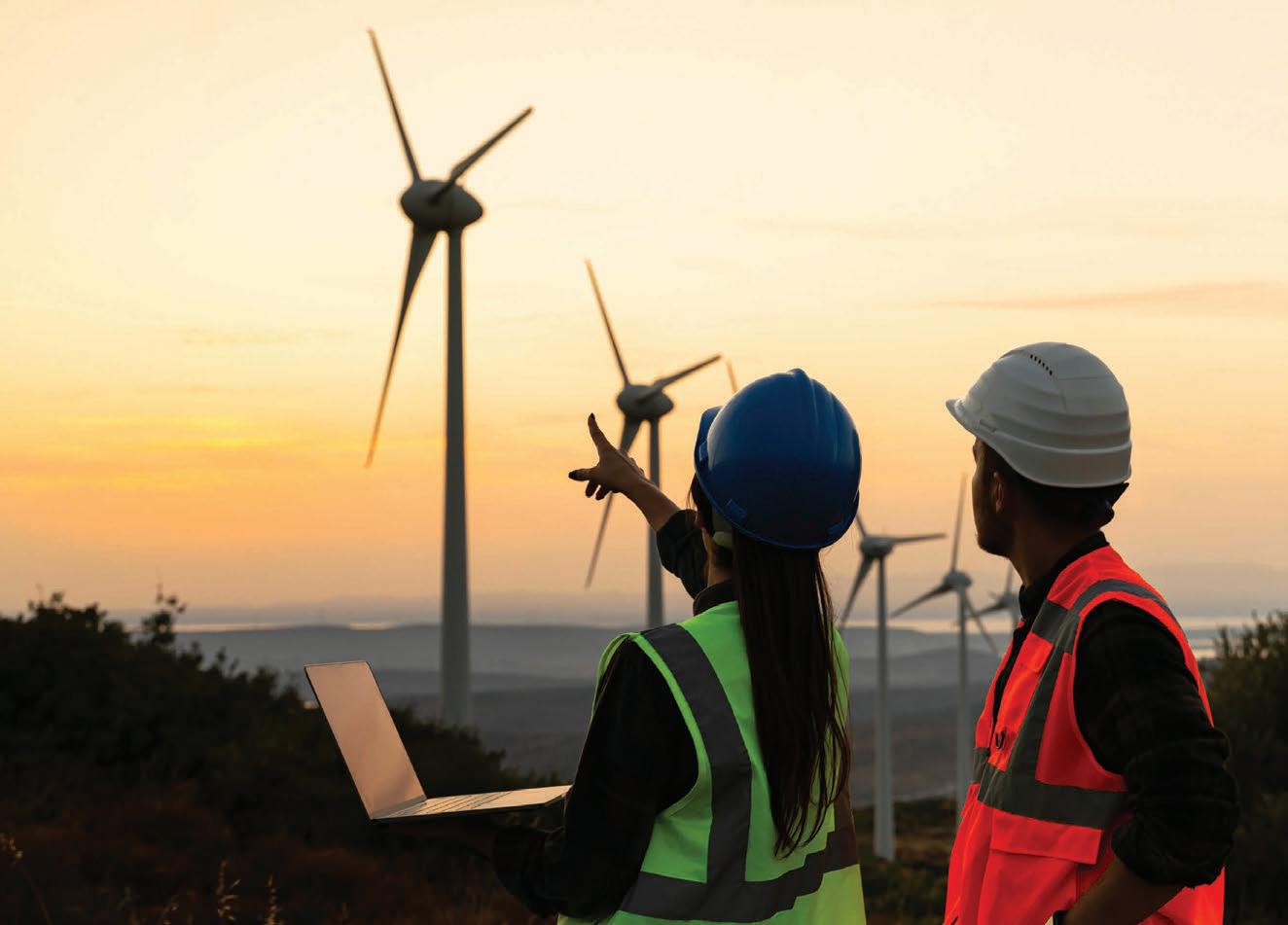
The answer lies at Holmesglen Institute, a frontrunner in renewable energy training. Holmesglen offers cutting-edge training that not only meets standards but sets them apart.
With a steadfast commitment to being future ready and environmentally sustainable, Holmesglen has become a key contributor in shaping a workforce primed for the renewable revolution.
According to David Tolliday, Senior Renewable Energy Instructor, Holmesglen’s renewable energy curriculum bears testament to its commitment to keeping pace with the evolving industry needs. The institute caters to a diverse range of learners, empowering them with the skills and knowledge necessary to thrive in the renewable energy sector.
“Depending on the course or apprenticeship they complete, the
knowledge and skills developed at Holmesglen can be transferred into various sectors of the renewable energy industry,” Tolliday said.
“Our electrician graduates can work on solar, batteries, and wind installation and maintenance, our electrical fitter graduates can work on the wind turbine maintenance and our engineering graduates can work as fabricators and welders on the large wind turbines.”
A recent Jobs and Skills Australia study stated that Australia must rapidly develop its skilled renewable energy workforce, requiring 32,000 more electricians, 450,000 clean energy jobs, and strategies to address engineer shortages and improve training inclusivity to meet its 2030 targets.
This has set a new requirement for RTOs in Australia and Holmesglen is at the forefront to meet this demand.
Tolliday said 2024 saw a new suite of renewable training units come into effect.
“There is the usual training for electricians and for the first time, non-electricians can get formal training and qualifications to get or further their employment in the renewable energy sector,” he said.
He added that according to regulations, non-electricians can qualify as site surveyors and designers but not as installers, while traders and installers must hold an unrestricted electrical license for installations.
In this context, the institute’s renewable energy curriculum diversification, which offers opportunities for non-electricians, stands out as a significant advantage.
Tolliday said this approach will broaden the talent pool entering the renewable energy sector and establish a more inclusive pathway, particularly benefiting women
and others who may not have traditionally pursued electrical trades.
“Recognising the value of time, our courses prioritise efficiency by blending online knowledge acquisition with hands-on, face-to-face learning sessions. Supported by scheduled webinars, students receive ample opportunities for inquiry and assistance,” Tolliday said.
“The face-to-face component further solidifies learning through practical activities and personalised instruction, ensuring comprehensive knowledge enhancement is achieved.”
Holmesglen’s efforts in aligning its curriculum with industry needs is further showcased through strong partnerships with leading renewable energy companies and organisations.
“Since our inception, major manufacturers have consistently chosen to partner with us.
In 2008, during Clenergy’s nascent stages in Australia, they provided invaluable product and technical support to Holmesglen, cementing a lasting partnership,” Tolliday said.
“This collaborative relationship persists to this day. Over the years, renowned manufacturers such as Solis, Fronius, BYD, PowerPlus, Bosch, and REC have recognised the mutual benefits of participating in our renewable energy programs, enriching both our organisations.”
These collaborations provide students with access to cutting-edge technologies and industry insights, establishing a seamless pipeline between education and employment streams.
Holmesglen’s leading position in renewable energy training is not only embraced by businesses, but also recognised by government authorities.
A prime example of this is the Victorian Government’s $2.1 million funding allocation to upgrade Holmesglen’s renewable energy training facilities. This investment, made in late 2022, bolstered Holmesglen’s capacity to prepare a skilled workforce capable of meeting Victoria’s clean energy transition goals.
The government’s decision to fully fund this major upgrade speaks volumes about Holmesglen’s standing as a leader in renewable energy education and training.
For more information, visit holmesglen.edu.au

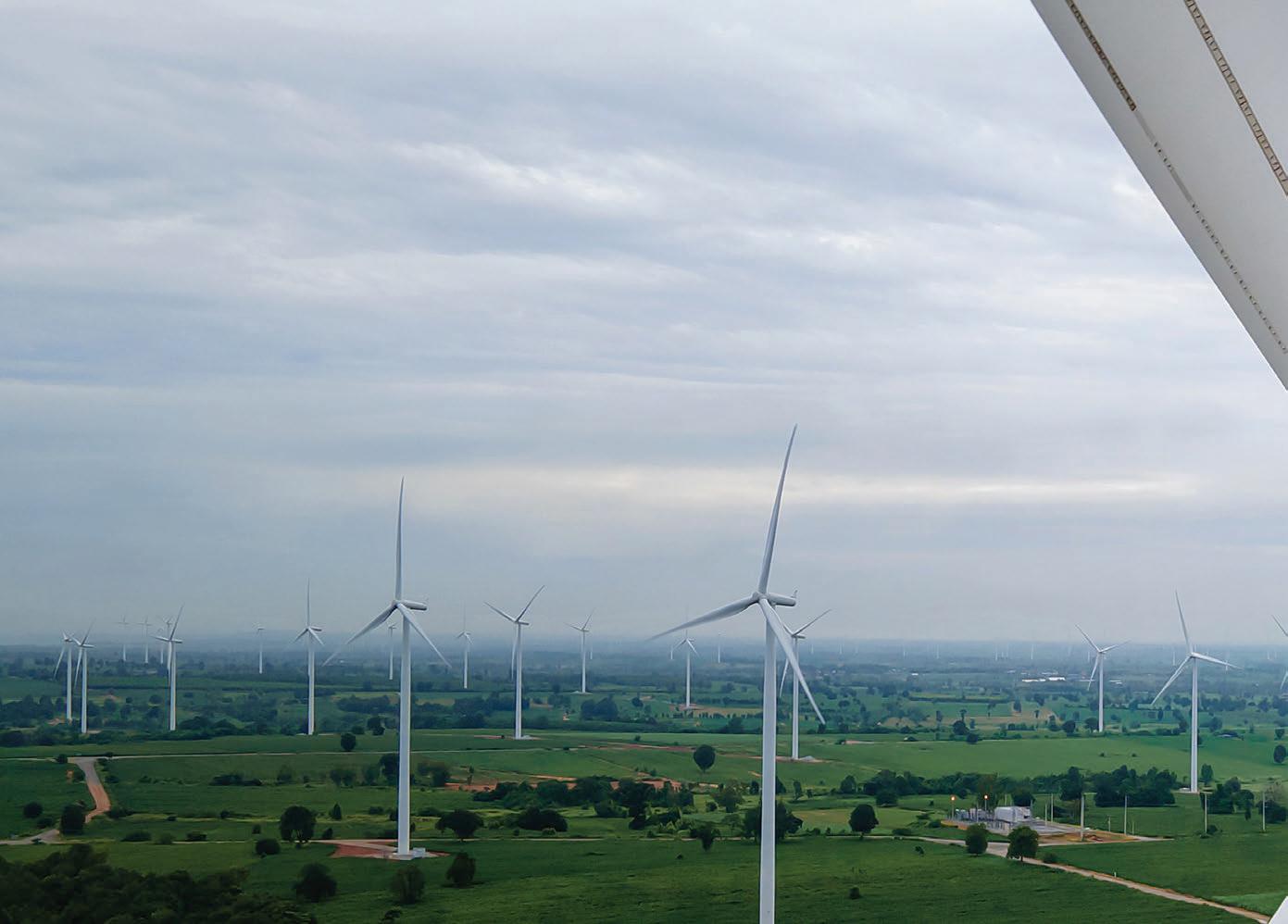
In a move hailed as a pragmatic step towards enhancing cooperation on clean energy, Australia has dropped its anti-dumping duties on imported Chinese wind turbines.
In a decision that signals a thawing of trading tensions between China and Australia, it opens the door for deeper collaboration in accelerating the nation’s renewable transition.
According to Tim Buckley, CEO of Climate Energy Finance, lifting the punitive trade barriers represents a positive development aligned with Australia’s ambitions to tackle the climate crisis through a collective global response.
With China standing out as the world’s undisputed leader in renewable manufacturing and zero-emissions technologies, Australia has much to gain from such cross-border partnerships.
“Australia doesn’t have a domestic wind turbine industry of substance,” Buckley said.
“It’s crucial we collaborate with world leaders like China when it comes to the energy transformation.”
He emphasised the immense opportunities for joint investment, given China’s massive capacity-building and
unparalleled investments across these future industries.
However, deepening technological and economic ties with China have sparked concerns over national security risks and supply chain dependencies. Buckley said a balanced approach involving strategic partnerships carefully structured as “win-win” collaborations safeguarding both sides’ interests.
“We need to consider supply chain diversity,” he said. “One option is partnering with Chinese firms to build joint manufacturing capacity in Australia, sharing their world-leading expertise while mitigating risks to our national security.”
The renewable energy shift is gaining momentum under Australia’s new Labor Government. Its recent $330 million investment in industrial decarbonisation projects, while modest, marks “an important step in the right direction,” according to Buckley.
He argued that a nationwide carbon
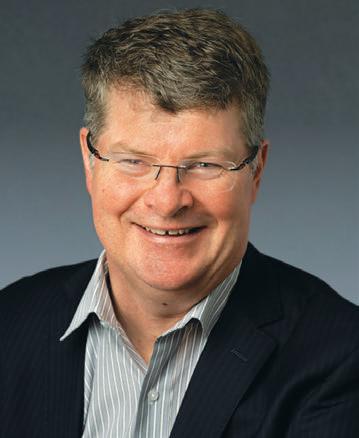
price would have been the ideal policy tool but acknowledged the political challenges.
Looking ahead, many experts believe Australia’s future prosperity hinges on becoming a renewable energy superpower focused on value-added processing of critical minerals, rather than simply exporting raw materials. However, significant hurdles must be overcome.
Buckley identified the lack of a international carbon price and Australia’s relatively sluggish deployment of large-scale
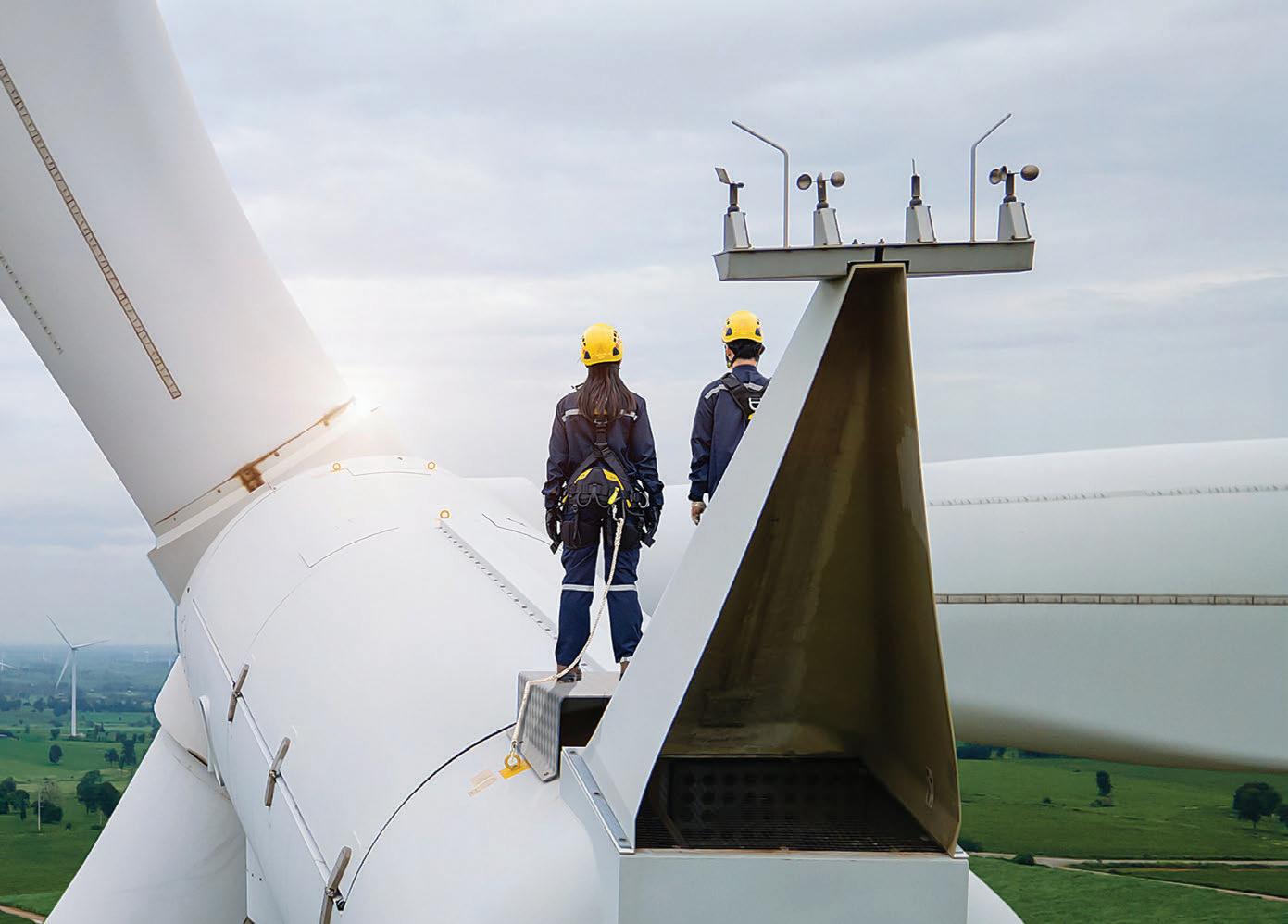
wind and solar projects as major barriers.
“China is installing 20-24 gigawatts of renewable energy per month. Australia is struggling at one-twentieth of that pace,” he said.
To enable exports of “green” products like iron and aluminum, Buckley said the urgent need for Australia to invest tens of billions into modernising its grid infrastructure and building massive renewable energy capacity, particularly in regions like the Pilbara.
“We need to have low-cost, zero-emissions renewable energy at the scale required as a prerequisite for decarbonising our exports,” he said.
Buckley also suggested the government should allocate more public capital to catalyse private investment while reinforcing strategic policies outlined in the “Future Made in Australia” plan.
Potential initiatives could include extending the $1.3 billion electrification program, boosting spending on energyefficient social housing, and introducing production tax credits to incentivise domestic solar manufacturing without raising costs for consumers.
“There should be a budget subsidy effectively valuing the geopolitical cost of
enhancing national energy security and driving supply chain diversity,” Buckley said.
To Buckley, Australia’s renewable future is the dominance of solar power coupled with battery storage and electric vehicles.
“When you look at the fundamentals, solar is by far and away the lowest-cost source of zero-emissions energy available to Australia,” Buckley said.
“I firmly believe solar, and batteries will dramatically lead the transformation of our energy system, complimented by wind and other renewables playing supporting roles.”
According to him, green hydrogen currently faces challenges regarding cost competitiveness. He suggests that further advancements are needed in the industry to unlock its full potential.
Buckley said the importance of financing commercial-scale hydrogen projects to facilitate “learning by doing” and pave the way for eventual large-scale deployment.
Rather than solely focusing on exporting hydrogen directly, Buckley envisions an innovative approach where green hydrogen can be utilised for the production of ‘green iron’, thus creating environmentally friendly steel products.
These products could meet the demands
of major trading partners such as China, Japan, and Korea. This strategic use of green hydrogen also showcases its versatility and aligns with the global shift towards sustainable practices.
As the global climate crisis intensifies and trade tensions persist, Buckley believes Australia must chart a pragmatic course balancing economic, environmental, and security priorities. Strategic partnerships with China unlocking mutual benefits will be key but must be carefully structured to protect national interests on both sides.
“The new government is working to normalise relationships and remove unnecessary punitive impediments to collaboration with China,” he said.
“This climate crisis requires a combined global response, and there are enormous opportunities for cooperation when done the right way.
“With political will, sound policies, substantial investment, and cross-border cooperation, Australia can accelerate its transition to becoming a renewable energy superpower – a vital economic transformation to secure a prosperous and sustainable future in the era of climate change.”
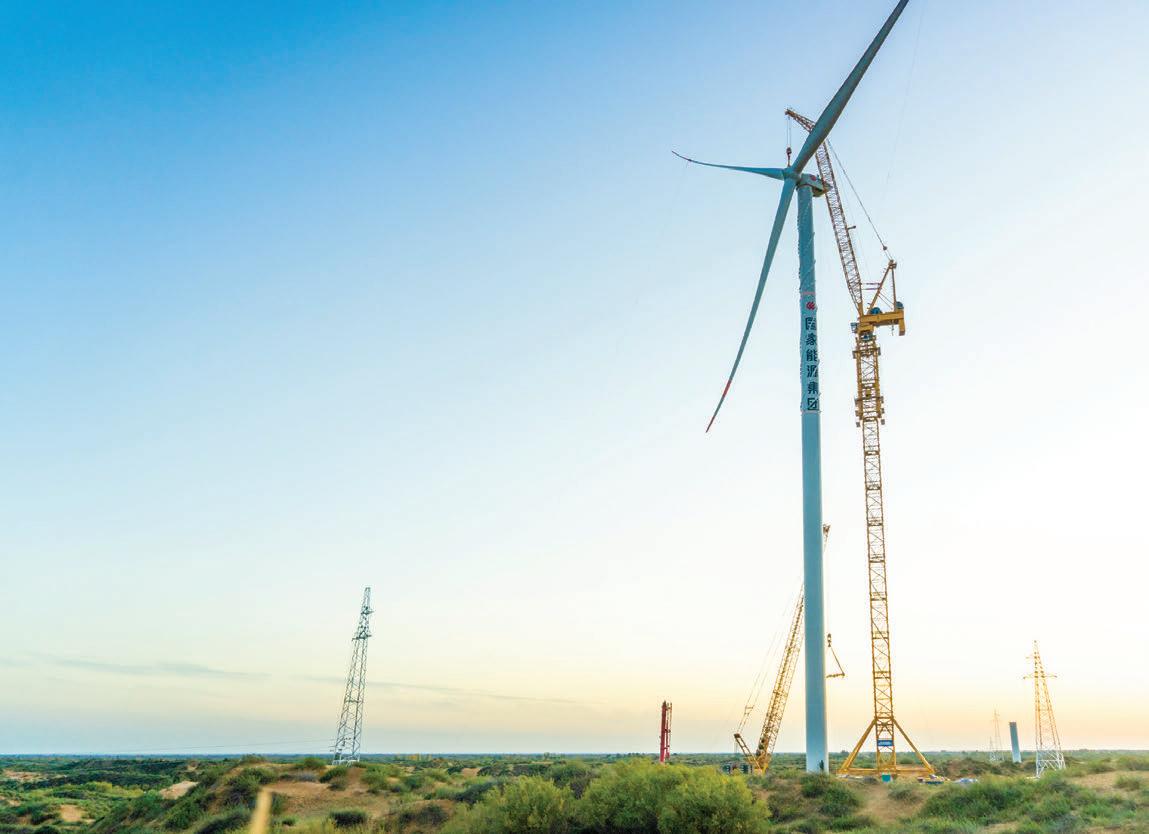
Wind farms are set to play a vital role in the world’s transition to a net-zero future.
According to the International Energy Agency, the world was adding 114 gigawatts (GW) of electricity to the global supply of energy per year, as of 2020.
But much more needs to be done.
To reach the target of net-zero emissions by 2050, the world will need to be adding 350GW of electricity powered by wind farms per year.
To achieve these lofty targets, wind farms must increase in size and wind turbines must get bigger and increase their output.
Some plans are already in place. For example, global renewable energy company Vestas has released a wind turbine design that features a hub height of 199m and produces 7.2 megawatts (MW) of electricity that will be available to the market by 2025.
But the need for bigger turbines means the need for bigger machinery and, with
wind power output having increased drastically in China, which in installing 328.48GW in 2021 alone, the country is producing some of the world’s most windfarm-adept machinery.
According to XCMG’s ANZ Crane Manager Stephen Broomfield, the mass of large wind turbines being produced in China is reflective of the “bespoke” machinery being designed to accommodate larger wind farms.
“China has identified a gap in the market, and XCMG has moved quickly to act, to fill that void, and develop machines that can take us to net-zero by 2050,” he said.
As such, XCMG is developing its own equipment to suit this growth.
“We’re designing our cranes in line with wind farm manufacturers to produce specific cranes that align with the new wind farm technology that is moving forward at a rapid rate,” Broomfield said.
Evidence of this can be seen in the Chinese manufacturer’s design of a tower crane to accommodate larger wind farms.
The electric-powered XGL1800 possesses a maximum lifting capacity of 138 tonnes, a maximum working range of 60m – at which it can lift 11.5 tonnes – and a maximum free-standing height of 114.5m.
The benefits of using the tower crane aren’t just limited to its specs, however.
The compact nature of the machine means it exerts minimal ground pressure that, in tandem with its capacity to be powered electrically, results in a much smaller environmental footprint.
Furthermore, the XGL1800 can also be fully erected to its maximum height in 24 hours, while only requiring 18 hours to dismantle, making it easier and quicker to navigate a jobsite. And with a reduced need for support trucks and personnel comes financial savings and environmental benefits.
“The costs associated with powering a generator to then power a crane are minimal when compared to powering a crawler crane or a mobile crane,” Broomfield said.
“These tower cranes are bespoke machinery to accommodate the demand for taller turbines, and XCMG has delivered.”
XCMG hasn’t just limited itself to producing tower cranes for wind farm construction and maintenance.
Two other machines developed by the Chinese manufacturer that fit the bill are the XCC2000 and XCC2600, narrow track crawler cranes that don’t quite fit the definition of a telescopic crawler crane but possess telescopic booms and are driven on crawler tracks.
XCMG specifically designed the XCC2000 to be a wind power crane. Possessing a maximum main boom length of 81.4m and extensions providing the crane with a maximum hoisting height of 150m, the narrow track crawler crane is the largest telescopic wind power crane China has exported to date.
Utilising its wind tower jib extension, the crane can lift over 130 tonnes at heights of 145m, while also possessing a narrow chassis of 4.5m.
The XCC2600, on the other hand, features a maximum capacity of 500 tonnes at a radius of 3m, a main telescopic boom of 82m, and a maximum hook height of 173m using its wind tower jib extension.
Also possessing a narrow chassis of just 4.5m, Broomfield said the cranes’ high lifting capacities, long reach and compact dimensions, to name a few, mean the
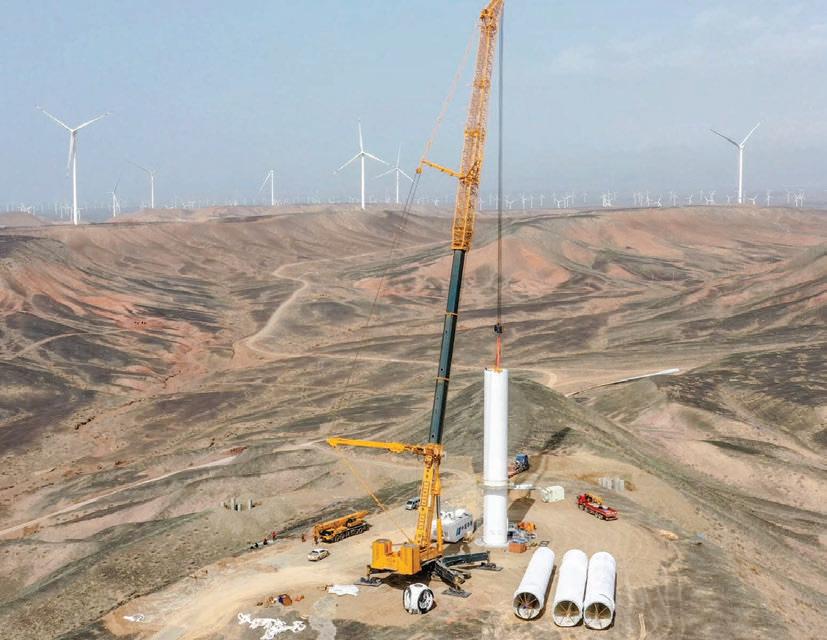

machines thrive in wind farm environments. This was recently evinced by the XCC2000’s performance in Bosnia and Herzegovina, where it erected 20 wind turbines for an 84MW wind farm in Livno. The crane overcame challenging conditions at 1500m above sea level during Bosnia’s winter – a period notorious for its strong winds and unpredictable weather.
For Broomfield, the two bottom-slewing, telescopic crawler cranes are reflective of XCMG’s commitment to providing the market with alternative options.
“The main goal is to continue providing solutions outside of the conventional options,” he said. “Rather than tell wind farm developers that it can’t be done, we want to ask them how high they need to go.”

Australia’s push for decarbonisation spotlights the pivotal role of community-driven renewable energy projects.

With the rise of grassroots projects, community wind farms have gained significant attention for their potential to promote energy democracy, decentralised supply, and active local participation.
However, their scalability and broader impacts within the context of Australia’s ambitious renewable energy targets remain topics of spirited debate.
In an exclusive interview, Professor Andrew Blakers from the Australian National University (ANU) shared with ecogeneration the advantages and

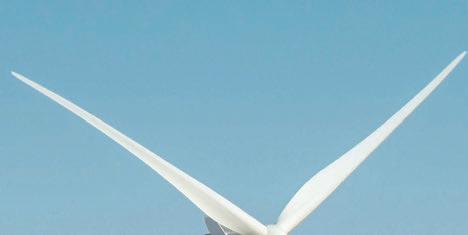
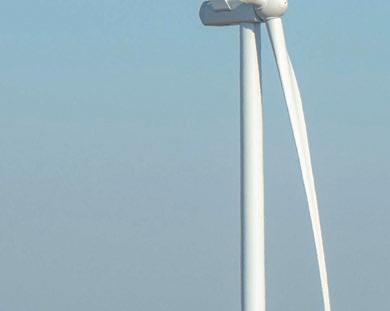

limitations of community wind farm projects within Australia’s rapidly evolving renewable energy landscape.
One of the key benefits of most wind farm projects, as highlighted by Professor Blakers, is the financial compensation they provide to landowners.
“The landowner is usually generously compensated, and this revenue stream can be significant for rural communities,” he said.
Additionally, wind farms can contribute to community funds, supporting local initiatives.

Blakers said the construction and operation of these projects create employment opportunities within the local communities, through “investment during the construction phase and lots of maintenance jobs”.
He also said that wind farms coexist nicely with agricultural activities, as “wind towers and access roads only occupy about one per cent of the land”.
According to Blakers, a standout requirement for successful wind farms projects lies in the need for transparency and early, proactive engagement.


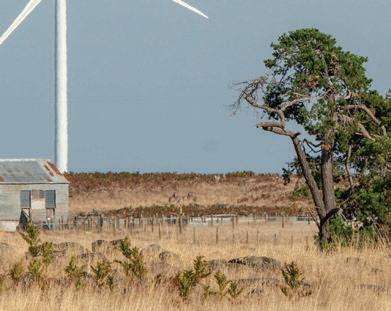


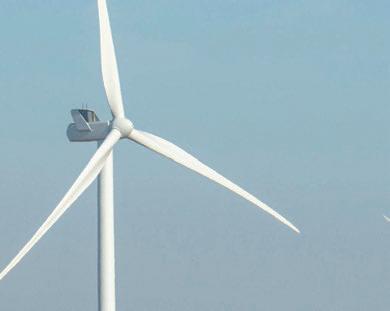
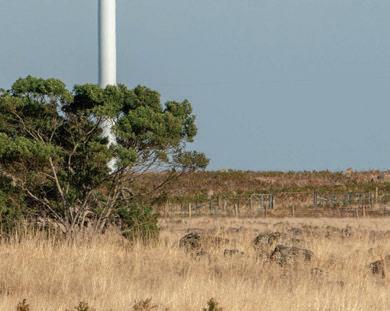



Proactively addressing local community concerns, providing equitable compensation, and fostering open dialogue can help navigate challenges and facilitate a smoother, more socially cohesive transition towards a sustainable energy paradigm.
While acknowledging that it’s impossible to satisfy everyone, Blakers pointed to the importance of providing information and engaging with the local community and ensuring proper compensation for hosting landholders.
“The first thing to realise is that you’re never going to satisfy everybody,” he said.

“When building a wind farm, you can make sure that you supply lots of information, engage with the local community, and make sure that the hosting landholders are properly compensated.
“The same way the transmission and wind farm companies have dealt with it, you have to also provide generous


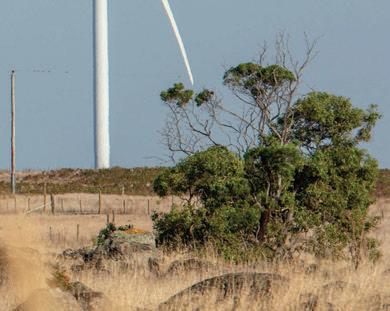

compensation for the owner of the land that the transmission is traversing. Then you have smaller payments to their neighbours, and you have a community fund,” Blakers said, advising on strategies for multistakeholder collaboration.
“You are open and transparent from the outset that there is going to be transmission, but the route needs to be negotiated.”
Despite the benefits of small community wind farms, their inherent scale is limited when compared to the colossal size of Australia’s decarbonization ambitions.

To meet this demand, Blakers pointed to the necessity of large-scale commercial wind farm developments spearheaded by major industry players.
“If each turbine is 4 megawatts (MW), then we need 20,000 turbines. This is utterly beyond the scale of community wind farms with a few turbines. It has to be large companies with large assets,” he said.
“We need about 400 gigawatts (GW) of solar and wind to completely decarbonise Australia, including electricity, transport, heating, industry, and synthetic aviation and shipping fuels. Right now, we’re about 12 per cent of the way towards this 400GW target. So, whatever we’ve got now in terms of transmission and solar and wind farms, we need about eight or nine times more.”
However, this does not negate the valuable supporting role that community wind farms can play within Australia’s broader renewable energy transition, particularly when integrated synergistically with complementary technologies such as solar photovoltaics and battery storage systems.
“If you’re building a multi-100MW wind farm, it’s usually a good idea to add solar because then you have a common connection point into the grid, which is usually difficult and expensive,” Blakers said.
“And the solar, the wind, and the battery, if you have it, can share the same connection point.”
Blakers acknowledged the importance of minimising environmental disturbance during wind farm construction, suggesting that projects should proactively avoid areas requiring deforestation or significant ecological disruption.
“If you need to cut down trees, then go somewhere else. There’s a lot of places to put solar and wind farms,” he said.
“It turns out that when you build these things that life continues pretty much as was. If you’re already farming the land,
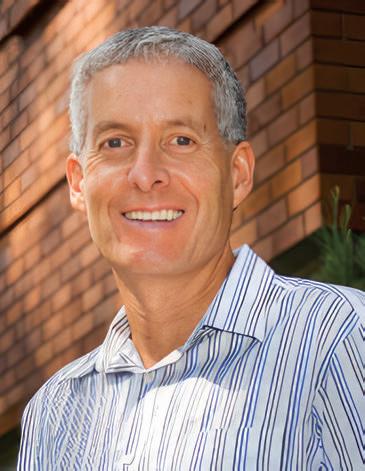
then you’ve already done so much damage through conversion of natural pasture to improve pasture and by cutting down trees. Putting turbines every square kilometre doesn’t add much extra damage.”
While acknowledging that some level of disruption is inevitable, Blakers drew insightful parallels with the impact of mining operations and urban development on local communities over time.
“People in cities have to put up with the building next door suddenly getting three extra stories. People in rural areas also have to put up with some level of inconvenience,” he said.
Ultimately, Blakers said that governments need to be prepared to proceed with necessary projects, while ensuring fair compensation.
“In the end, governments have to be prepared to say, ‘I’m sorry, but the transmission, the wind, the solar, or whatever, is going to get built. You’re going to get compensated. But we are going to build it in the same way that railway lines, roads, and cities get built,” he said.
According to Blakers, while community wind farms may not emerge as the predominant mainstream source of Australia’s burgeoning renewable energy supply, their role in fostering energy democracy, decentralised generation, and grassroots support cannot be overlooked or underestimated yet.
“The role of grassroots, of course, is to adopt renewable energies like putting solar on your roof,” he said.
“Every time you use more renewable energies, we’re burning less coal and gas, and this is a very good thing to do well into the future.”
Wind energy is emerging as a pivotal element in Australia’s renewable superpower ambition.
Professor Bruce Mountain, Director of the Victoria Energy Policy Centre at Victoria University, champions wind power as a vital component of a sustainable energy future.
In an interview with ecogeneration, he said he “can’t imagine a clean energy future that doesn’t have a good deal of wind generation”.
However, the intermittent nature of wind energy has sparked discussions regarding its reliability within the larger energy landscape. Critics point to wind’s fluctuation, casting it as less reliable and more unpredictable compared to other forms of renewable energy.
Mountain acknowledged the shortcomings of wind energy but also pointed out that these can be mitigated
with carefully planned grid integration strategies and plans.
According to him, these strategies include the deployment of energy storage systems, enhancing demand-side flexibility to synchronise with variable supply, and embracing alternative dispatchable energy sources such as hydro, biomass, or nuclear.
He said that energy storage is crucial for compensating for the variability of wind and solar power.
“Once you get to very high renewable penetrations, you need extraordinarily large amounts of it, and it will not be affordable with our current technology mix. This underscores the need for continued innovation and development of cost-effective, large-scale storage solutions,” he said.




“In the future, we will need a greater volume of energy storage, not just power capacity. Energy storage can be characterised by its power output — the instantaneous rate of energy production — as well as its energy capacity over time. We will require significantly more energy capacity.”
This perspective aligns with a report released by Commonwealth Scientific and Industrial Research Organisation last year, which suggests that between 10 to 14 times more storage could be needed in the coming decades to support the National Electricity Market.
Securing social license and transmission access is also a challenge faced by the wind energy industry in Australia, particularly the hurdles of acquiring these components for large-scale implementation.
Mountain said the global recognition of these complexities, which are proving more intricate than initially anticipated.
A specific concern involves Australia’s transmission system, primarily configured to support fossil fuel sources near metropolitan areas. This configuration lacks robustness in regions distant from urban centres, where renewable resources are abundant, but fossil fuel resources are scarce.
Consequently, extending transmission networks essential for enhancing wind generation capabilities becomes complicated.
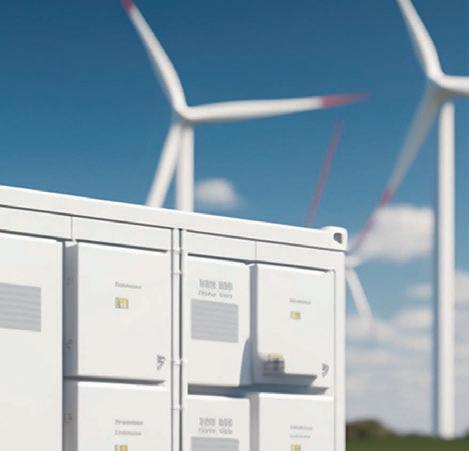

To address these challenges, Mountain said the necessity of robust support from local communities is important.
“Stakeholders must engage in pragmatic transmission planning and establish viable social license agreements,” he said.
“Advancements in these domains are imperative for large-scale wind energy production to gain community endorsement and achieve economic viability.”
Regarding grid stability and reliability concerns as wind energy penetration increases, Mountain suggests prioritising inverter-based resources so they can play grid-forming roles.
“They can provide inertia. They have already proved to be more capable than hydro or fossil fuel resources in the frequency control ancillary services markets,” he said.
To accelerate the development of wind energy and energy storage, Mountain advises focusing on several key areas. He said avoiding import tariffs on Chinesemade components is important.
“Ensuring that we don’t put tariffs on Chinese-made componentry will be crucial...The Chinese have established an advantage in nearly every aspect of storage and clean energy technology. Imposing import tariffs on those items would be detrimental to our progress,” Moutain said.
Additionally, Mountain recommended “more realistic arrangements for distribution and transmission network

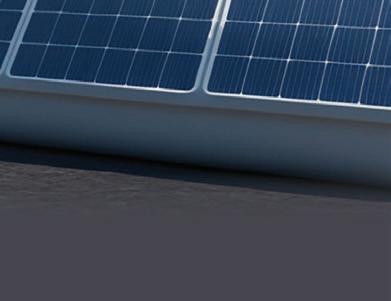
access” and “continuing to foster competitive service procurement and installation practices, as we have successfully done with rooftop solar and large-scale projects”.
“These things have been achieved in behind-the-meter energy installation, but often have not been achieved in the largescale stuff,” he said.
Crucially, Mountain called for effective policy and regulatory frameworks.
“Increasing policy support directed at storage will be necessary to achieve the volumes required for full decarbonisation in the absence of a dispatchable clean energy alternative,” he said.
While acknowledging the complexities involved, Mountain remains optimistic about the potential for wind energy and storage to drive Australia’s energy transition.
He suggested to Australian policymakers the priority should be “continued exploration, the creation of options and negotiated settlements amongst interested parties”. He said the importance of regional and local solutions and learning from each other rather than trying to impose top-down central directions.
Finally he said the importance of our largely untapped resource of commercial and industrial rooftops not just for cheap and clean electricity for its owners and tenants, but as a source of clean energy and storage for grid supply.

BLUETTI, a pioneering brand in the clean energy storage industry, has demonstrated its professional expertise by earning the coveted Clean Energy Council certification.
An important milestone in a clean energy company’s timeline, is being recognised by the Clean Energy Council (CEC) - Australia’s leading body for the renewable energy industry.
BLUETTI’s commitment to providing high-quality, reliable, and sustainable energy solutions has been noticed with CEC awarding its certification for its EP760 home energy storage system, demonstrating that the product meets the highest industry standards.
The BLUETTI EP760 is a cutting-edge home backup power system designed to revolutionise the way homeowners manage their energy consumption. With a flexible capacity ranging from 9.9 kilowatt-hour (KWh) to 19.8KWh, this modular energy storage system can be customised to meet the specific needs of any household.
At the heart of the EP760 is its powerful 7600W pure sine wave inverter, capable of delivering uninterrupted power to run virtually any household appliance, from refrigerators and heaters to power tools and even electric vehicles.
According to Tiger Han, BLUETTI Australia’s Director, this revolutionary system provides multiple output options, supporting alternating current
(AC) or direct current (DC) coupling modes simultaneously to meet diverse energy needs.
“The BLUETTI EP760 is equipped with multiple output interfaces and supports AC or DC coupling, or both simultaneously. In contrast, other options on the market only support AC coupling,” Han said.
This ensures that homes remains fully operational during power outages, providing a seamless transition from grid power to battery power in less than 10 milliseconds - faster than a blink of an eye.
One of the EP760’s standout features is its compatibility with solar systems. With a maximum solar charging rate of 9000W, the EP760 can efficiently store excess solar energy generated during the day and utilise it when the sun isn’t shining.
This not only ensures a stable and adequate supply of solar power regardless of weather conditions or time of day, but also significantly reduces your reliance on the grid and slashes your electricity bills.
It is expected that Australian users can potentially save hundreds of dollars by making full use of EP760, as it allows users to maximise solar energy usage and minimise energy purchased from utilities.
“Electricity companies in many areas
may charge higher rates during peak hours. By storing the solar energy generated during the day with the EP760, it’s possible to avoid purchasing electricity from the grid during peak hours, reducing electricity costs. Utilising surplus solar energy, it can be stored in the EP760 for use during the night or on cloudy days,” Han said.
“This reduces dependence on the grid and consequently saves on electricity bills.”
When investing in a home backup power system, reliability and durability are paramount. The EP760 is designed with longevity in mind, featuring an IP65 rating for excellent dust and water resistance, ensuring it can withstand most tough outdoor conditions.
Additionally, the system utilises the safest LiFePO4 batteries, which boast an impressive lifespan of ten years and come with an advanced battery management system (BMS) to prevent short circuits, overcharging, and other potential hazards.
“BLUETTI equips the EP760 with lithium iron phosphate batteries, which have a 10-year warranty, greatly enhancing the longevity of the EP760,” Han said.
“BLUETTI has a strong technical team and research and development capabilities, conducting strict quality control in the
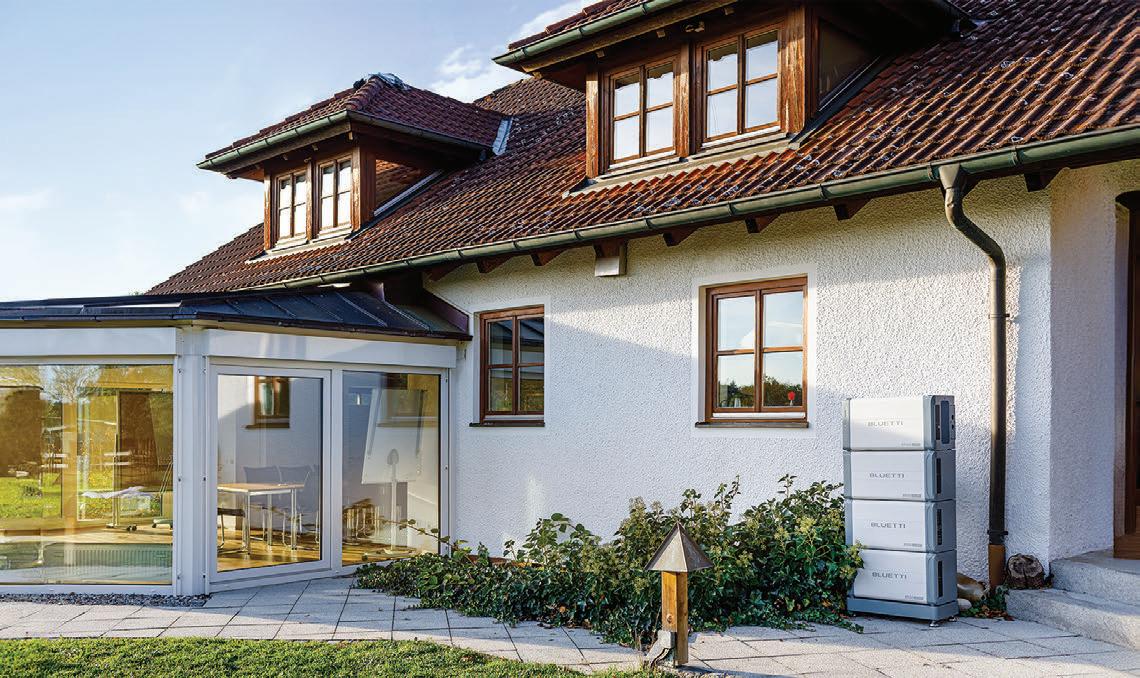
production process to ensure that every EP760 meets the standard requirements, thereby reducing the possibility of product quality issues.”
BLUETTI’s unwavering commitment to customer satisfaction is further exemplified by EP760’s generous 10-year warranty, providing peace of mind, and ensuring the investment is protected for years to come.
The EP760’s modular design not only allows for customisable capacity but also makes installation a breeze. Unlike wall-mounted systems, the EP760 can be stacked vertically on the floor, saving valuable space, and eliminating the need for complex wiring or home modifications.
With its IP65 rating for weather protection and quiet operation at less than 50dB, the EP760 can be installed indoors or outdoors, adapting seamlessly to your living environment.
Since its inception, BLUETTI has been at the forefront of promoting sustainability and green energy solutions. By offering eco-friendly energy storage solutions for both indoor and outdoor use, the company aims to provide exceptional experiences for homes while contributing to a sustainable future for the planet.
This commitment to sustainable energy has propelled BLUETTI’s growth, expanding its reach to over 100 countries and gaining the trust of millions of customers worldwide. With a relentless
pursuit of innovation and a focus on quality, BLUETTI continues to push the boundaries of what’s possible in the renewable energy industry.
The EP760 home energy storage solution is poised to be a game-changer, empowering homeowners to take control of their
energy consumption while reducing their carbon footprint.
By earning the prestigious CEC certification, BLUETTI has demonstrated its dedication to delivering professional, reliable, and sustainable energy solutions.
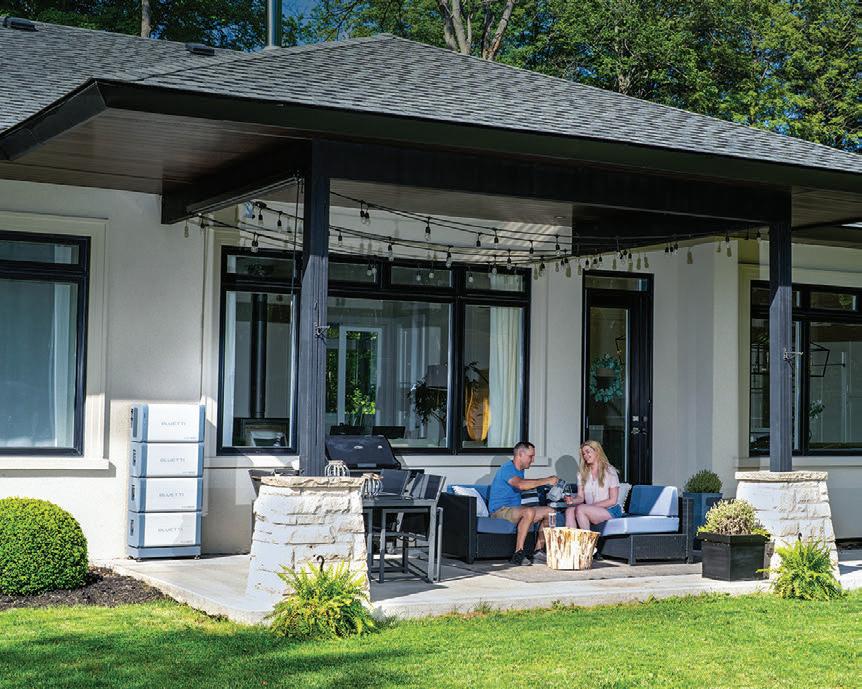
In the rapidly evolving world of renewable energy and grid modernisation, one company has emerged as a true innovator.
With its pioneering EnerMatrix line of containerised battery energy storage systems (BESS), ATESS is helping to redefine the standards of versatility, reliability, and safety in the energy storage industry.

At the heart of ATESS’ success lies its unwavering commitment to engineering excellence and a deep understanding of the unique demands of the energy market. Its EnerMatrix containers are designed to be true one-stop solutions, seamlessly integrating a host of advanced features that set them apart from the competition.
One of the standout capabilities of the EnerMatrix containers is the ability to support alternating current (AC) and direct current (DC) coupling schemes.
This allows for lightning-fast 0–10ms

on and off grid switching for the energy storage industry.
This versatility enables the systems to easily integrate with microgrids, provide reliable back-up power, and perform peak shaving and frequency modulation tasks, all while maintaining uninterrupted operations.
This level of responsiveness and flexibility is crucial in ensuring the stability and resilience of modern power grids, particularly as they become increasingly reliant on renewable energy sources.
The plug-and-play nature of the EnerMatrix containers is further enhanced with pre-wired equipment inside the container that, according to ATESS, reduces on-site installation workload by more than 50 per cent.

This streamlined approach not only simplifies deployment but also reduces the overall cost of ownership, making ATESS’ solutions a fit for its customers.
By minimising the time and resources required for installation, ATESS enables its clients to focus on the core business of energy generation and distribution, rather than getting bogged down in complex infrastructure projects.
Ease of operation and maintenance is another key advantage of the EnerMatrix containers. Designed with accessibility in mind, these systems can be maintained from the front and rear sides, minimising the time and resources required for ongoing upkeep.
This user-centric approach is further complemented by a robust temperaturecontrol system, which is designed to




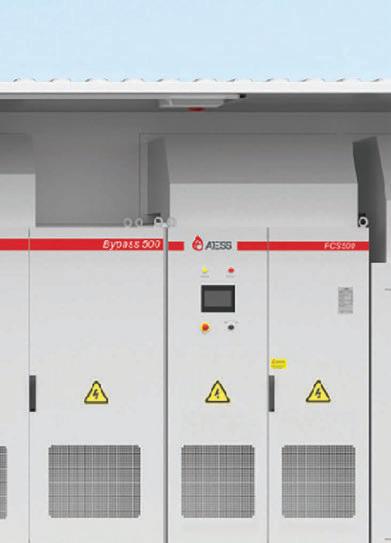

ensure the stable operation of the system and extend its lifespan.
By reducing the burden of maintenance, ATESS empowers its customers to maximise the return on their energy storage investments and maintain optimal system performance over the long term.
But ATESS’ commitment to excellence extends well beyond the functional aspects of its BESS containers. With a IP54 protection rating, these systems are designed and built to withstand even the harshest environmental conditions.
Comprehensive safety measures, including smoke and temperature sensing, as well as an automatic spraying system that uses heptafluoropropane gas to extinguish fires, ensures the reliability and security of these energy storage solutions.
In an industry where safety and risk mitigation are paramount, ATESS believes its proactive approach to safeguarding its products sets a new benchmark.
the click of a button.
The communication interfaces used in these containers allow for seamless integration, enabling customers to monitor and control the systems remotely.
This level of connectivity and datadriven decision-making is essential for the efficiency and effectiveness of energy management.
the performance and reliability of the EnerMatrix solutions.
From off-grid solar plants in Africa to the hybrid power stations in Asia, the company has successfully deployed its containerised BESS across a diverse range of applications and geographies, solidifying its reputation as an innovator in the industry.
This track record of success reinforces the versatility and scalability of ATESS’ offerings, making the company an attractive choice for energy providers and grid operators around the world.

Leveraging these advanced communication capabilities means customers can stay informed about the performance of their energy systems in real-time and make informed decisions to optimise their operations. This in turn helps to enhance the efficiency and effectiveness of the energy-management process.
Recognising the critical role of real-time monitoring and control in the modern energy landscape, ATESS has equipped the EnerMatrix containers with advanced communication features. These systems can integrate with existing energy management platforms, providing customers with instant access to all system information and the ability to optimise performance with


As the world continues its shift towards a sustainable energy future, the demand for reliable and scalable energy storage solutions will only continue to grow.
The versatility of the EnerMatrix containers is further enhanced by its compatibility with a wide range of technologies, which allows customers to select the energy storage solution that best suits their specific needs, whether it’s for small-scale microgrid applications or largescale grid support projects.
By offering a diverse range of battery options, ATESS empowers its clients to tailor energy storage systems to their own unique operational requirements and economic constraints.
ATESS’ global presence and extensive project experience is a testament to
ATESS’ EnerMatrix containers are poised to play a pivotal role in this transformation, empowering customers to harness the full potential of renewable energy while ensuring grid resilience and stability.
With its versatility, reliability and safety, ATESS is confident its systems will help redefine the way energy providers and grid operators approach the challenges of the 21st century.

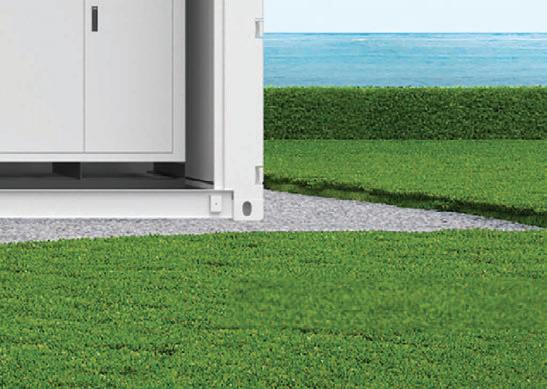


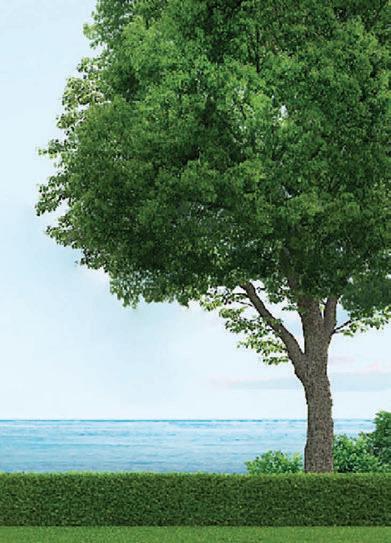

Growatt, a leader in renewable energy, understands the vital role battery technologies play in energy storage, and how it will help drive the clean energy transition.
Growatt is helping pioneer innovation in renewable energy, blending global vision with local service excellence. With a commitment to advancing next-gen products, the company underscores its leadership in shaping the future of the industry.
Helping lead the way, Growatt entered the energy storage market in 2015 and launched residential energy storage solutions, for which it has continued to expand and build a smart energy ecosystem centred around energy storage.
Covering residential, commercial, microgrid and portable energy storage solutions, as well as smart energy management platform, Growatt’s comprehensive approach help meet the diverse energy storage needs across different markets and application scenarios.
Emphasising the critical importance of energy storage, the International Energy Agency reported that battery systems are indispensable for enabling the clean energy shift. Growatt has embraced this paradigm by adopting a forward-looking “global presence and localised service” strategy.
Up to date, over 2.9 million end-users from various markets across seven continents connected to Growatt’s Online Smart Service System, showcases Growatt’s notable global footprints.
This strategic move has also positioned Growatt as a front-runner in the global energy storage market and have a wide adoption in developed countries and regions such as Australia, Europe, and the Americas.
This is evident from its ranking as the world’s leading supplier of storage hybrid inverters in 2021 and 2022, based on shipment performance data from Frost Sullivan and S&P Global Commodity Insights, respectively.
Capitalising on rising energy storage demand across the Asia-Pacific region after achieving solid 2023 results, Growatt continues to expand with
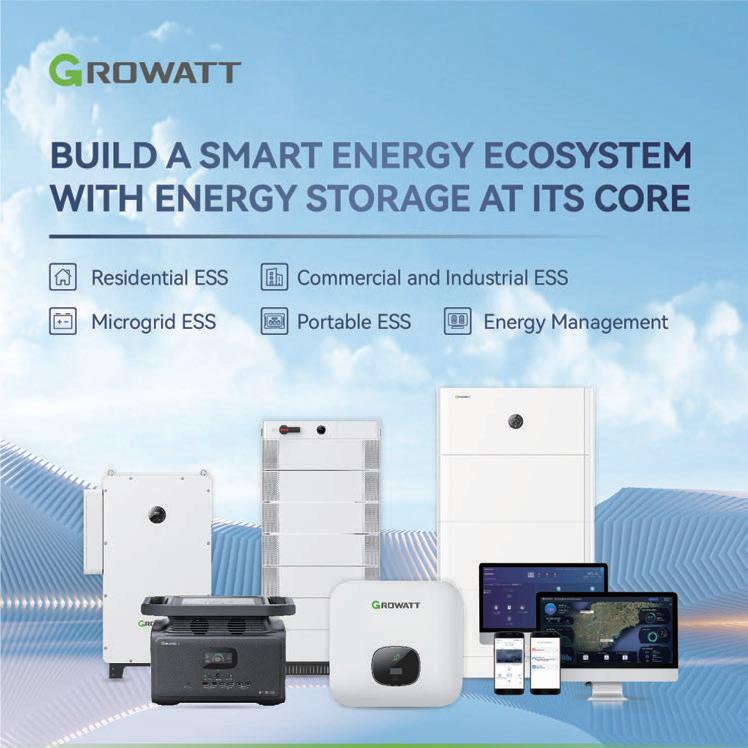
an extensive proven product portfolio.
Australian attendees at the expo in March demonstrated substantial interest in Growatt’s Battery-Ready inverter, which seamlessly integrates with the latest APX HV Battery. Additionally, they expressed keen interest in the newly introduced commercial and industrial energy storage systems, as well as the comprehensive line-up of portable power stations. These diverse options cater precisely to the varied energy objectives of local investors.
This trend is further fuelled by state initiatives such as Queensland’s Battery Booster program and Victoria’s Solar Battery Loan scheme, highlighting the growing significance of household energy storage.
Among the company’s notable events
in 2024, Growatt prominently showcased its latest residential and industrial storage solutions at Japan’s Smart Energy Week in Tokyo, spanning from February 28 to March 1.
Growatt also held large roadshows in Myanmar on March 1, with hundreds of attendants, and in Pakistan on February 27, forging strategic customer partnerships. Growatt’s efforts in the Indian market have also garnered recognition, recently winning the coveted Inverter State Market Leader Award for outstanding contributions to the photovoltaic industry. While strengthening its foothold in the Asia-Pacific region, Growatt continues solidifying its presence in Europe, a core market since the company’s founding. This robust European expansion demonstrates
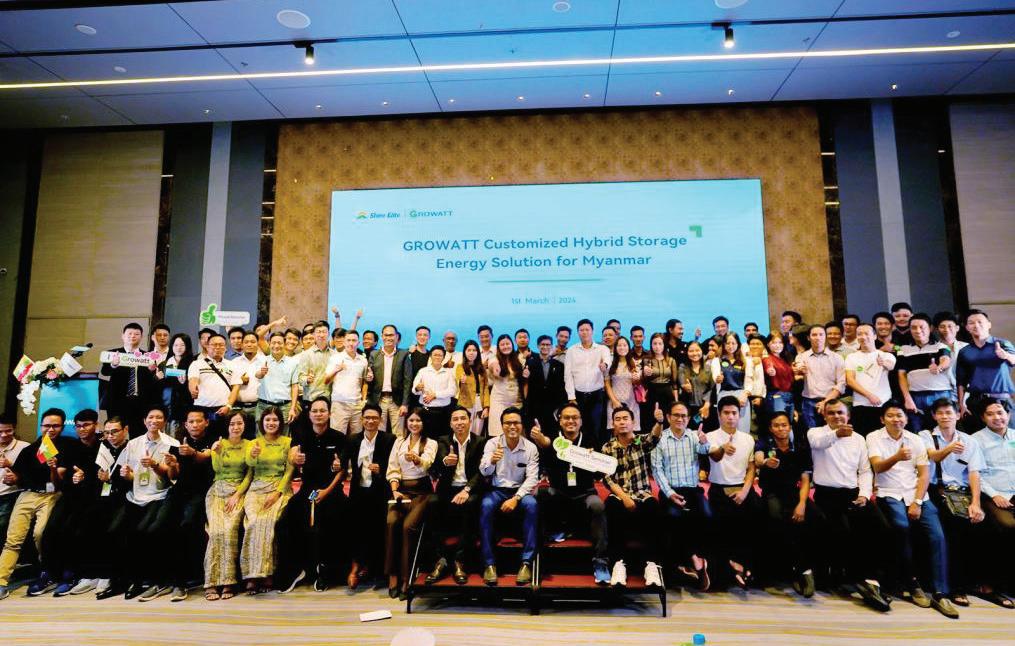
Growatt’s commitment to the region.
Notable events included the GENERA International Energy and Environment Exhibition in Madrid, where Growatt showcased its diverse portfolio of renewable solutions to support Spain’s energy transition. The company also highlighted its innovations at Italy’s KYB Energy expo.
Growatt’s energy storage solutions are particularly well-received by European clients, as storage plays an increasingly pivotal role in the region’s energy landscape. According to the European
Commission, energy storage is a critical technology that provides the necessary flexibility, stability, and reliability for the future energy system.
With renewable energy estimated to account for approximately 69 per cent of the EU’s electricity by 2030 and 80 per cent by 2050, system flexibility is crucial. Growatt is well-positioned to capitalise on this growing market demand with its innovative storage offerings.
While solidifying its European footprint, Growatt is also turning its sights toward the Americas. This region represents
another strategic market for the company’s 2024 expansion, with Growatt aiming to enhance its brand influence across both North and South America.
The company kicked off 2024 by exhibiting at the Intersolar North America event in San Diego, attracting strong interest with its solar and storage technology offerings. Other notable initiatives included product training sessions in Argentina and Colombia as Growatt empowers customers and partners across the continents.
Lisa Zhang, Vice President of Growatt’s marketing department said the company is forging ahead with a dual strategy - rapidly expanding its global footprint while delivering localised offerings through regional research, talent development, and tailored management.
“This synergy positions Growatt as a catalyst for accelerating renewable energy adoption worldwide,” Zhang said.
“2024 marks an inflection point for us, with an ambitious agenda encompassing over 200 global events, new product launches, and strategic partnerships. This highlights our intensified commitment to realising our global clean energy ambitions and solidifying our leadership in the renewable energy transformation.”
For more information, visit au.growatt.com
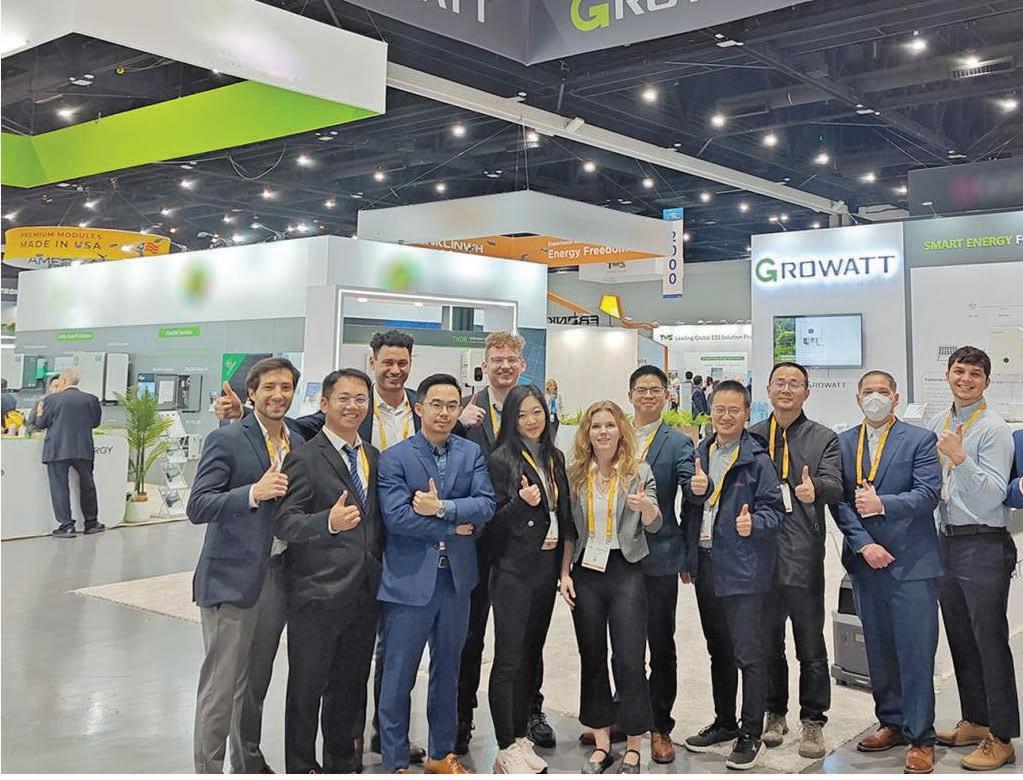


When Chris Croker, co-chair of the First Nations Clean Energy Network, sat down with ecogeneration, he emphasised the crucial role Indigenous communities play in Australia’s transition to a renewable energy power. He is a strong advocate for First Nation people’s active involvement in economic benefits and decision-making on their traditional lands.
As the Australian Government prepares its Future Made in Australia Act to catalyse growth in clean energy manufacturing and technologies, Croker cautioned that this economic shift cannot come at the expense of First Nations peoples.
“We want to see economic and policy systems that include and embed First Nations culture, rights and interests, and priorities,” Croker said.
“We don’t want to see a repeat of the mistakes of the past.”
Around half of the new renewable energy assets Australia needs to meet 2030 emissions targets will be built on lands where First Nations people hold legal interests and rights.
Croker, whose organisation is an advocate for Indigenous access to renewable energy, fostering economic empowerment, and environmental stewardship, stressed the urgent need
for policies ensuring fair economic opportunities and revenue sharing.
“When there’s land access agreements or compensation, governments acquire land interest from farmers, but our First Nations groups don’t have the legal Western legal title,” Croker said.
“I always ask project developers and government to recognise that there’s actually two types of legal title.”
Croker believes First Nations peoples’ cultural connections to their ancestral estates must be validated through compensation and benefit-sharing mechanisms on par with other title holders.
“Our cultural connections are still valid and as strong today as they have ever been,” he said. “We should equally compensate our First Nations parties that have the same interest in that particular piece of land.”
Croker raised concerns about the disconnect between billion-dollar renewable projects and disadvantaged First Nations communities, where jobs and wealth are created but benefits can flow past local communities.
“It makes no sense to have a massive wealth generation and employment ... but actually the benefits, the jobs, that money is flowing straight past our disadvantaged communities,” he said.
The First Nations Clean Energy Network proposed policy options to close this equity
gap, including fiscal incentives, ownership requirements, job-creation targets, and prioritising First Nations procurement.
“We need both carrots and sticks –incentives to drive better First Nations outcomes ... and penalties if the benefits don’t flow through and our cultural heritage is impacted,” Croker said.
Principles of consent critical
Croker believes that incorporating free, prior, and informed consent (FPIC) into the Future Made in Australia Act is crucial for meaningful First Nations participation in the future of Australian renewable energy.
“Where Traditional Owners and Indigenous communities are engaged as genuine partners from the start, projects develop faster, creating better value for investors and decreasing risk,” he said.
Croker suggested the Future Made in Australia Act should include dedicated financial commitments to build First Nations groups’ capacity to assess development opportunities and impacts.
“Any future plans must include a strong consultation and capacity-building element for our First Nations groups,” he said.
He stressed that FPIC needs to be part of the legislation to help ensure the right capacity and information is supplied to First Nations groups.
“At a practical level, FPIC needs to be

embedded ... So that they’re better able to understand the opportunities, the impacts to country, the impacts on our cultural and environmental obligations,” he said.
Croker emphasised the need for workforce-training and capacitybuilding initiatives to enable full First Nations participation in the renewable energy transition.
He would like to see greater investment in upskilling programs to equip First Nations people with the abilities to capitalise on emerging job opportunities.
“We need our TAFE system, our tertiary systems, our universities to actually start offering more focused opportunity to
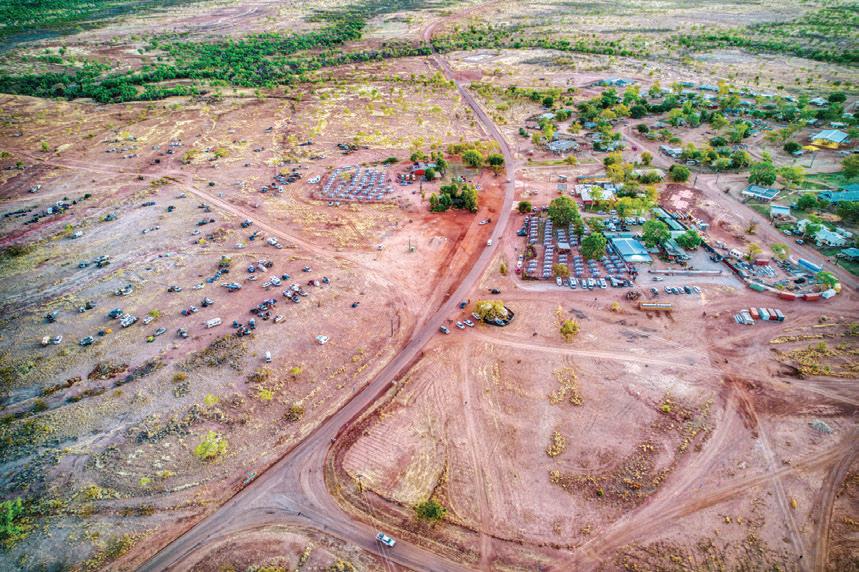
learn,” Croker said “We need it now. With only five years until the 2030 targets, and university degrees alone taking three years, we’re burning a huge chunk of that timeframe already.”
Partnerships between education providers, employers, and First Nations communities will be critical to developing and delivering localised training pathways. According to Croker, dedicated funding mechanisms to support capacity-building among First Nations groups should be part of the Future Made in Australia Act.
“First Nations people have the skills, the desire and the solutions to contribute meaningfully to this transition,” he said.
“But we can’t make it happen if we aren’t included as true partners from the outset. We’re here, we’ve been caring for these lands forever and we’re willing partners. But you need to engage with us early, respect and honour our unique rights and deep connection to Country, and give us real pathways to lead renewable projects impacting our traditional estates and communities.
“Our ability to share in the job-creation, economic prosperity and modern services flowing from this transition shouldn’t be a politicised debate, but a concerted national commitment to finally getting this right.”
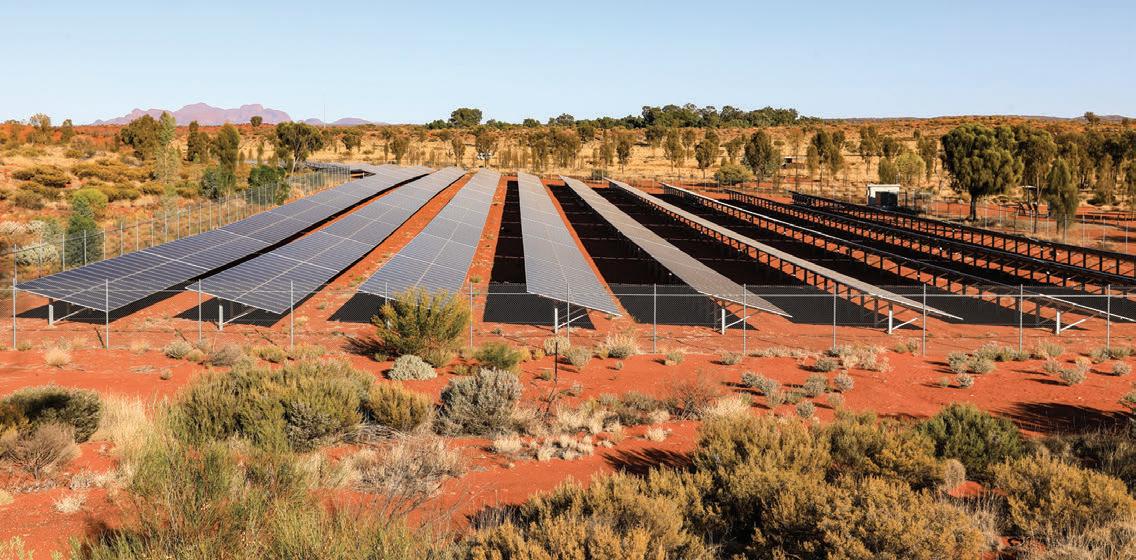






The need for sustainable solutions is more urgent than ever and AKCOME and Raystech are here to help.
TTwo industry giants, AKCOME and Raystech, have joined forces in an unprecedented partnership aimed at reshaping the renewable energy landscape.
wo industry giants, AKCOME and Raystech, have joined forces in an unprecedented partnership aimed at reshaping the renewable energy landscape.
AKCOME, a pioneering force in the solar industry, has established itself as a formidable player through its commitment to innovation and efficiency.
AKCOME, a pioneering force in the solar industry, has established itself as a formidable player through its commitment to innovation and efficiency.
With a diverse range of cutting-edge products, including the N-type Topcon 440W and Mono PERC 415W solar panels, AKCOME has set new benchmarks for performance and reliability. These stateof-the-art panels can be found across Raystech’s extensive network of warehouses throughout Australia, ensuring easy access for installers and distributors alike.
The partnership between AKCOME and Raystech is a strategic alliance that
With a diverse range of cutting-edge products, including the N-type Topcon 440W and Mono PERC 415W solar panels, AKCOME has set new benchmarks for performance and reliability. These state-of-the-art panels can be found across Raystech’s extensive network of warehouses throughout Australia, ensuring easy access for installers and distributors alike.

market, Raystech stands out by offering unparalleled value, outstanding products, and unmatched service, solidifying its position as an industry leader.
The partnership between AKCOME and Raystech is a strategic alliance that promises to accelerate the adoption of solar power in the region.
Raystech, with its extensive footprint and customer-centric approach, has positioned itself as the go-to source for renewable energy solutions in Australia and New Zealand.
The synergy between AKCOME and Raystech extends beyond mere business transactions; it is a shared vision of enabling the global renewable industry to thrive.
In Raystech’s mission statement, ‘To enable the global renewable industry to grow by providing dedicated support to our partners and moving towards a carbonneutral economy protecting our planet Earth’, AKCOME is confident it aligns with its commitment to creating and leading efficiency in new energy.
By leveraging AKCOME’s exceptional products, Raystech can offer its clients the latest advancements in solar technology, empowering them to embrace clean energy with confidence.
Raystech’s commitment to its clients is unwavering, embodied in its motto: ‘No job is too little, and no customer is treated differently’.
This ethos resonates throughout its
AKCOME’s journey in the new energy industry spans over 17 years, during which it has developed a dual wheel driven business model centred around new energy manufacturing and new energy service.

This holistic approach has allowed the company to provide a comprehensive one-stop service for new energy power generation, encompassing investment consultation, design and development, EPC construction, operation and maintenance, and energy sales.
researchers and a portfolio of over 300 technology and invention patents, the institute serves as the backbone for AKCOME’s technical transformations and strategic upgrades.
operations, ensuring that every installer, retailer, and wholesaler receives the highest level of service and support.
In an increasingly competitive market, Raystech stands out by offering unparalleled value, outstanding products, and unmatched service, solidifying its position as an industry leader.
The collaboration between AKCOME and Raystech represents a powerful alliance that is driving the renewable energy industry forward.
The synergy between AKCOME and Raystech extends beyond mere business transactions; it is a shared vision of enabling the global renewable industry to thrive.
By combining AKCOME’s innovative products and Raystech’s extensive distribution network, they are making clean energy more accessible and affordable for communities across Australia and New Zealand.
Together, they are paving the way for a sustainable future, one solar panel at a time.
In Raystech’s mission statement, ‘To enable the global renewable industry to grow by providing dedicated support to our partners and moving towards a carbonneutral economy protecting our planet Earth’, AKCOME is confident it aligns with
For more information, visit akcome.com.au and raystech.com.au
promises to accelerate the adoption of solar power in the region.
Raystech, with its extensive footprint and customer-centric approach, has positioned itself as the go-to source for renewable energy solutions in Australia and New
By leveraging AKCOME’s exceptional products, Raystech can offer its clients the latest advancements in solar technology, empowering them to embrace clean energy with confidence.
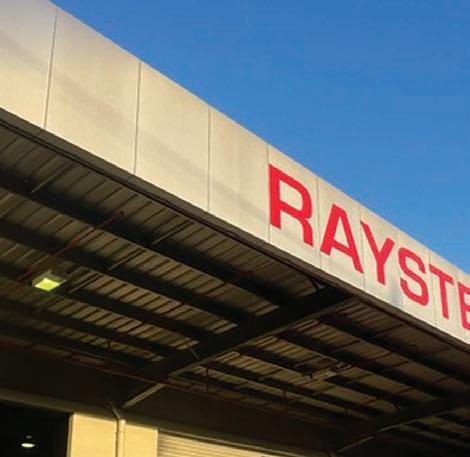
Raystech’s commitment to its clients is unwavering, embodied in its motto: ‘No job is too little, and no customer is treated differently’.
This ethos resonates throughout its operations, ensuring that every installer, retailer, and wholesaler receives the highest level of service and support.
In an increasingly competitive

exemplified by its subsidiary, AKCOME Optronics, which has been at the forefront of N-type cell and module
With a focus on creating high-quality and efficient photovoltaic products, AKCOME Optronics has introduced ground-breaking technologies such as the Heterojunction
These modules boast low degradation, non-destructive cutting, low-temperature welding, and no potential induced
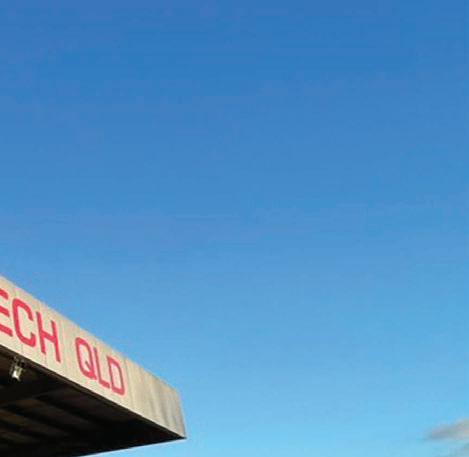
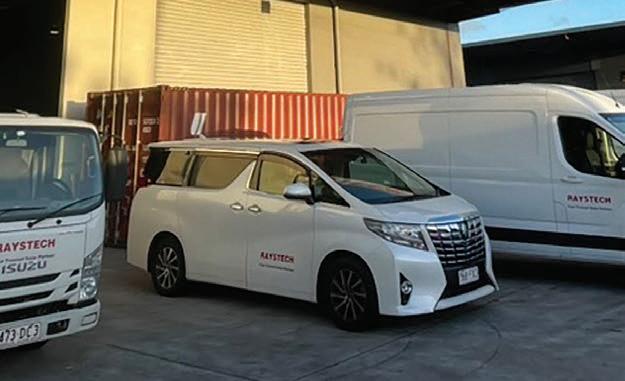

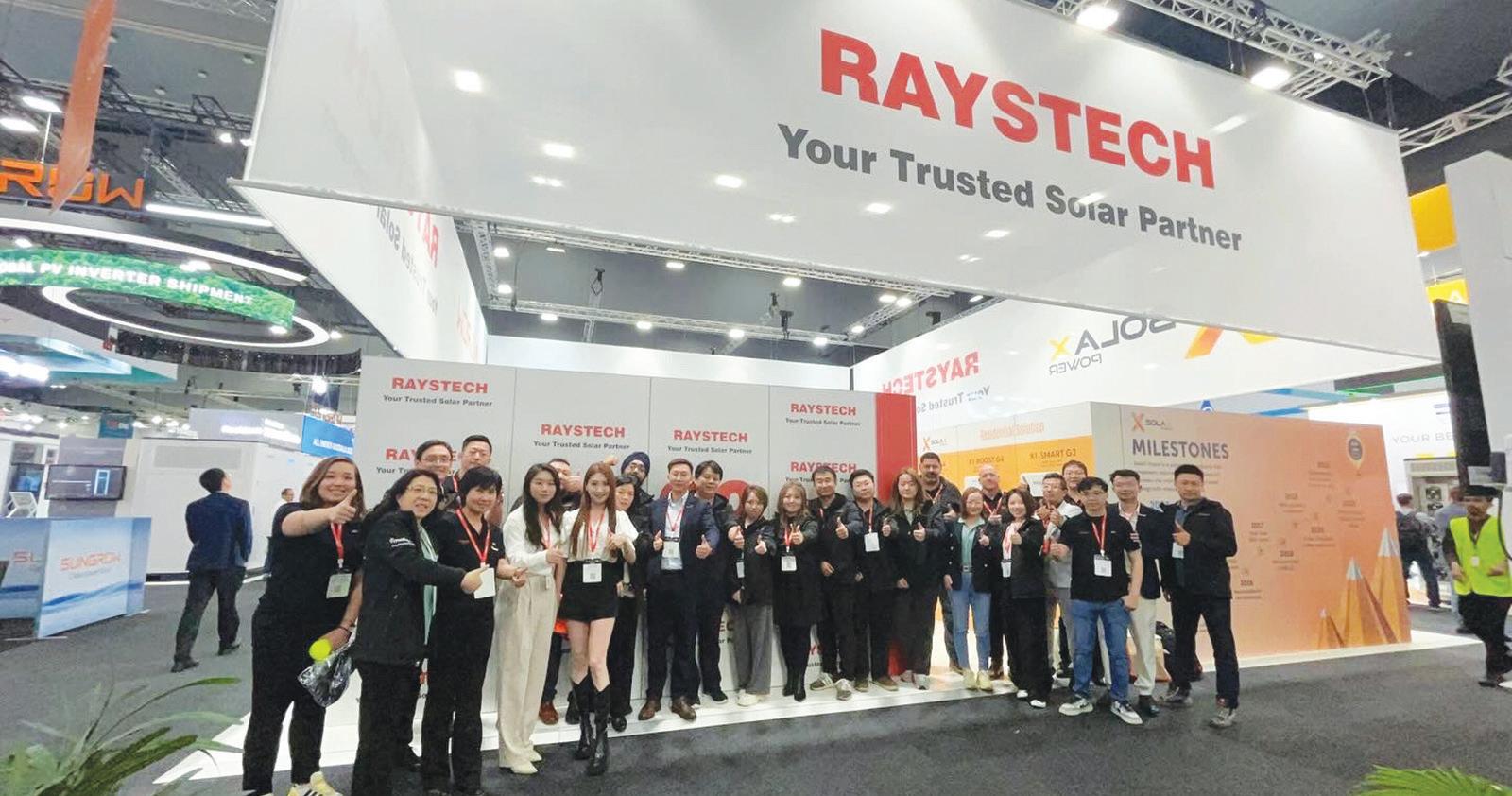
its commitment to creating and leading efficiency in new energy.
AKCOME’s journey in the new energy industry spans over 17 years, during which it has developed a dual wheel driven business model centred around new energy manufacturing and new energy service.
This holistic approach has allowed the company to provide a comprehensive one-stop service for new energy power generation, encompassing investment consultation, design and development, EPC construction, operation and maintenance, and energy sales.
AKCOME’s dedication to innovation is further exemplified by its subsidiary, AKCOME Optronics, which has been at the forefront of N-type cell and module development for the past 13 years.
With a focus on creating high-quality and efficient photovoltaic products, AKCOME Optronics has introduced ground-breaking technologies such as the Heterojunction Technology (HJT) Solar Modules.
These modules boast low degradation, non-destructive cutting, low-temperature welding, and no potential induced degradation (PID), ensuring superior performance and longevity.
Complementing AKCOME’s technological prowess is the AKCOME Energy Research Institute, established in 2013.
This cutting-edge facility is dedicated to the research, development, incubation, and application of smart energy technologies.
With a team of highly qualified researchers and a portfolio of over 300 technology and invention patents, the institute serves as the backbone for AKCOME’s technical transformations and strategic upgrades.
The collaboration between AKCOME and Raystech represents a powerful alliance that is driving the renewable energy industry forward.
By combining AKCOME’s innovative
products and Raystech’s extensive distribution network, they are making clean energy more accessible and affordable for communities across Australia and New Zealand.
Together, they are paving the way for a sustainable future, one solar panel at a time.
For more information, visit akcome.com.au and raystech.com.au
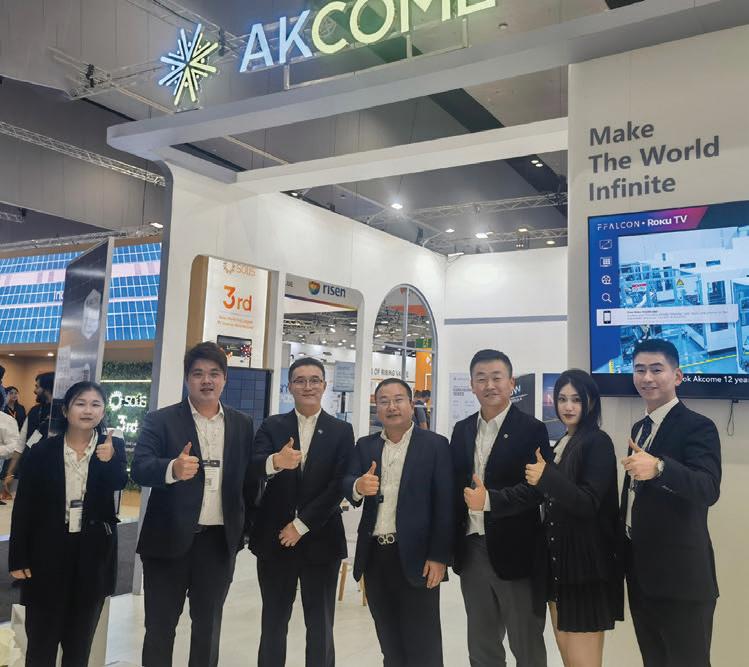
The sun-drenched region of Australasia has long been a haven for solar energy, and Trina Solar has played a pivotal role in offering a full spectrum of solutions to build on this opportunity.
In 2023, both Australia and New Zealand saw significant advancements in their overall solar sectors.
Australia has witnessed a significant 12.5 per cent increase in total installed solar capacity, now boasting 34.2 gigawatts (GW).

In parallel, New Zealand has also made impressive progress, thanks to strong government support, a rising need for gridbalancing services, and the ever-changing dynamics of the power market.
Consequently, both countries are experiencing a heightened demand for innovative renewable solutions, establishing themselves as frontrunners in the renewable energy sector.
Trina Solar has played a pivotal role in this renewable landscape across Australasia. As one of the few providers offering a full spectrum of solutions, it delivers an extensive array of modules, trackers, and energy storage systems.
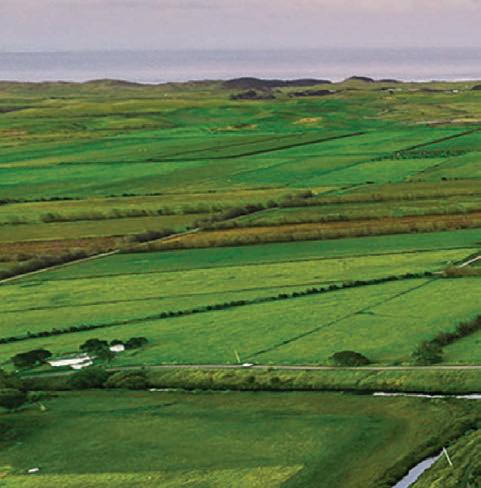
With an integrated approach, Trina Solar serves a variety of sectors and applications, ranging from large-scale solar farms to community projects and educational institutions, thus driving the momentum towards a sustainable future.
One of Trina Solar’s most remarkable achievements in the region is the Goulburn Community Farm in New South Wales, a pioneering initiative driven by residents under the Goulburn Community Energy Co-operative.
This 1.35MW solar farm, designed and installed by Smart Commercial Solar and developed by Komo Energy, is set to be one of the world’s first to integrate Trina Solar’s cutting-edge Vertex N bifacial modules, TrinaTracker Fix Origin fixed-tilt racking, and the advanced TrinaStorage Elementa
2.2MWh battery energy storage system.
“We’re thrilled to be involved in a project which shows what community will and persistence can achieve when it comes to accessing clean energy,” James Duckworth, National-Business Development Manager at Smart Commercial Solar said.

“Community Energy 4 Goulburn and Komo Energy have worked hard for years to bring cheaper, cleaner energy to Goulburn, and we’re excited to deliver this significant solar and storage project for them.”
In parallel, Trina Solar announced its involvement in establishing Australia’s inaugural tracker testbed at the Hills Educational Foundation (HEF) located near Brisbane, Queensland.
This collaborative effort with HEF, Queensland University of Technology, and




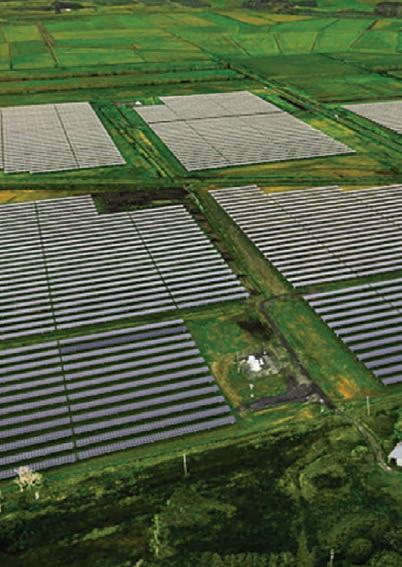

construction and civil engineering services by Diona, was initiated by Robert Saunders (now at Elecseed), who brought together diverse partners responsible for the project’s design, technology, construction, funding, and research.
The testbed measures the performance of a modern solar farm against an eight-yearold counterpart, using Trina Solar’s Vertex DEG19 bifacial modules on single-axis Vanguard 2P trackers.
The insights gained from this testbed will aid cost analyses for future solar farm replacements, reflecting Trina Solar’s holistic approach to continuing advancing solar technology.
The testbed will explore the albedo effect, experimenting with materials like recycled tin cans, pale-coloured ground covers, and cement sheeting to enhance light reflectivity for increased energy yield.
Additionally, the college aims to delve into agrivoltaics, intending to utilise whitepainted offcuts of shipping containers for cultivating mycelium, a protein-rich fungus widely recognized as a valuable feedstock.
“Agrivoltaics is something that Australia’s farming community is interested to explore,” Joseph Marinov, CEO of the Hills Educational Foundation said.
“Creating an environment conducive for crops to grow under the solar modules will help the country’s farmers to embrace renewable energy.”

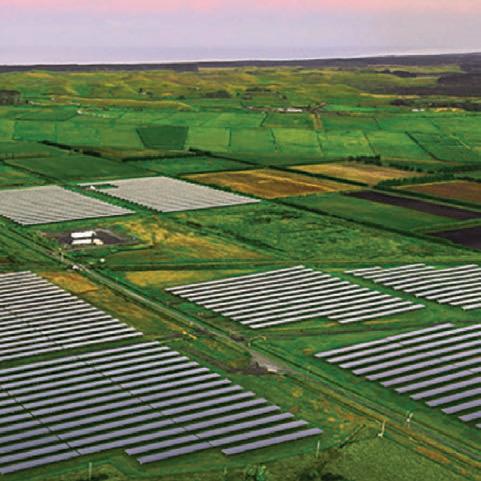
A showcase of integrated solutions Trina Solar’s prowess as a total solutions provider is further exemplified by its involvement in New Zealand’s largest solar farm to date – Kohirā solar farm.
This monumental utility-scale solar project, developed in collaboration with Lodestone Energy, spans an impressive 64 hectares and features over 61,000 Trina Solar Vertex 550W modules mounted on TrinaTracker systems, generating 33MW of DC energy.
The project’s integration of Trina Solar’s ultra-high-power bifacial dual glass modules with Vanguard 2P trackers, powered by a smart algorithm will optimise the tracking angle of the sun, ensuring maximum energy generation even in challenging environmental conditions.
The Kohirā solar farm showcases the implementation of agrivoltaic farming, enabling the coexistence of solar energy generation and agricultural activities like grazing sheep or growing crops beneath the solar panels.
By maximising land use efficiency, this dual-purpose system not only generates renewable energy but also supports local agricultural initiatives, a crucial factor in regions like New Zealand with its increasingly limited land resources.
Beyond supplying solar panels and trackers, Trina Solar has actively supported local installers, such as Infratec and Drillco,
by sharing its 27 years of experience and providing training in assembly and installation techniques.
This collaborative approach has enabled lower installation pricing, minimized contingency costs, and streamlined processes for faster delivery and unified after-sales service.
“Our collaboration with Trina Solar enables us to fulfill our goal of supplying renewable energy solutions to more consumers in New Zealand, meeting their sustainability goals while ensuring economic stability,” Gary Holden, Managing Director of Lodestone Energy said.
Trina Solar’s comprehensive product portfolio, backed by 27 years of solar innovation, positions the company as a formidable driving force in Australasia’s renewable energy transformation.

As a top global photovoltaic module supplier with over 190GW shipped by 2023, Trina Solar’a cutting-edge versatile tracker solutions are optimal for diverse Australasian terrains, and deliver robust stability and effortless installation.
Trina Solar’s in-house battery manufacturing expertise also allows the company to provide advanced BESS solutions that seamlessly integrate with its solar offerings, creating a comprehensive clean energy ecosystem.
For more details, visit trinasolar.com/au
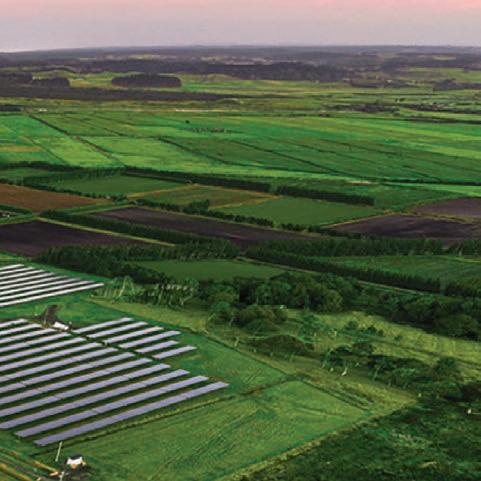
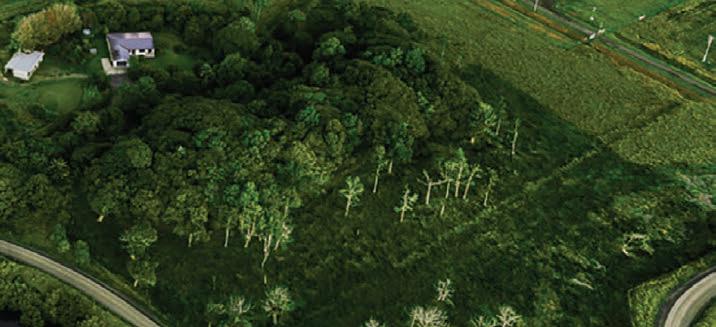
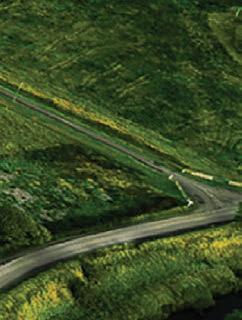



A quiet revolution is taking place in the heart of Australia’s urban sprawl, with Hoymiles redefining the solar landscape.
The benefits of solar energy have traditionally been reserved for those fortunate enough to have ample rooftop or ground space for large-scale solar installations.
However, Hoymiles is revamping the way solar is conventionally viewed and bringing a clean, renewable power source within reach of those living in apartments and similar spaces.
The key to balcony PV success Balcony photovoltaic (PV) systems, also known as “mini solar systems”, have been gaining traction in recent years, driven by accessibility and ease of installation.
Unlike rooftop options, these compact and efficient solutions are designed to be easily clipped onto balcony railings, making them a practical and appealing option for apartment residents.
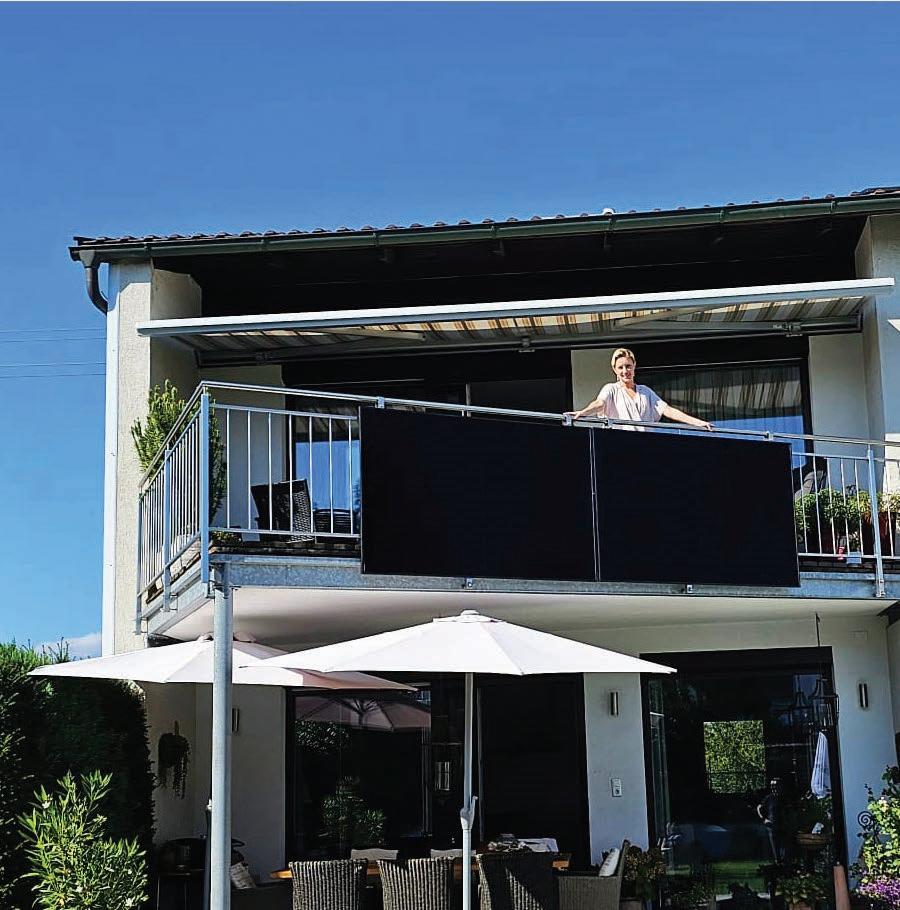

“Balcony solar systems open up a new world of possibilities for property owners who may have been previously excluded from the solar revolution,” Hoymiles
Australia Technical Director Freddie Bai told ecogeneration.
“By providing a plug-and-play solution that can be easily installed and moved, we’re empowering more people to take control of their energy future and contribute to a sustainable tomorrow.”
At the heart of Hoymiles’ balcony PV solution is its innovative microinverters, which play a crucial role in maximising the efficiency and performance of these mini solar systems.
Microinverters are an essential component of balcony PV systems, as they convert the direct current (DC) produced by the solar panels into the alternating current (AC) that can be seamlessly integrated into a property’s electrical grid. Unlike traditional string inverters, which manage the output of multiple panels as a single unit, microinverters work independently, ensuring that each panel operates at its optimal level.
“One of the key advantages of our microinverters is their ability to track the maximum power point (MPP) of each individual solar panel,” Bai said.
“This means that even if one panel is underperforming due to shading or other factors, the rest of the system can continue to operate at peak efficiency, maximising the overall energy output.”
Hoymiles’ microinverters are designed with the needs of balcony PV users in mind, offering a range of features that simplify the installation process and provide long-term reliability.
“Our newly released FLEX series, also known as HMS cable system, includes flexible accessories for a single microinverter solar system,” Bai said.
“For example, our HMS field connector
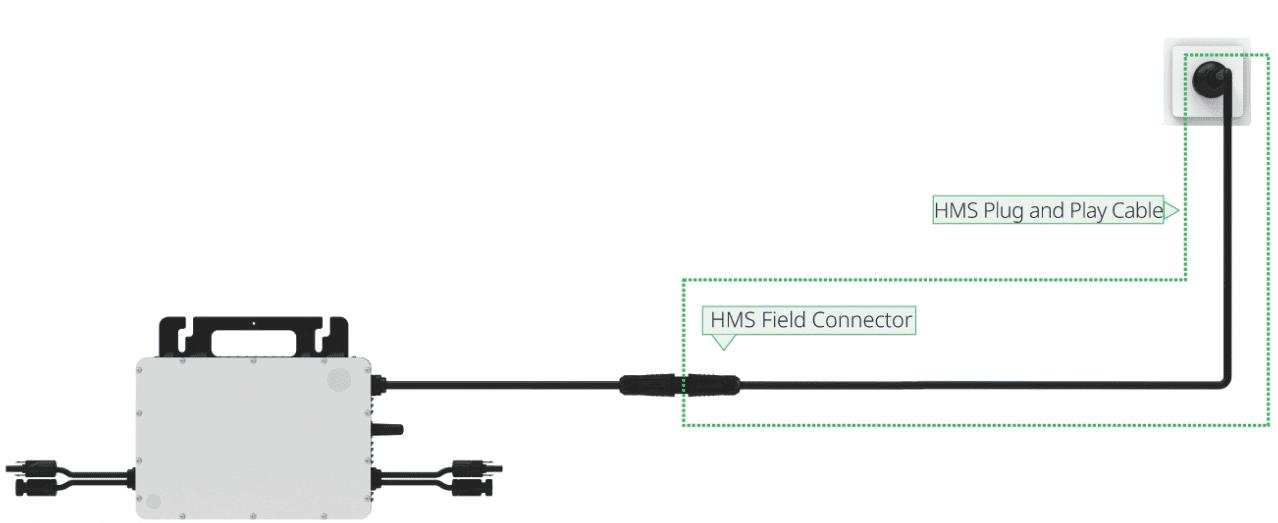
and HMS plug and play cable are specifically designed for balcony solar systems. Users can simply plug the microinverter directly into a household socket, without the need for complex wiring or professional installation.”
This plug-and-play functionality not only saves time and money but enhances the safety of the system. By eliminating the need for complex wiring, Hoymiles’ microinverters reduce the risk of electrical hazards, providing peace of mind for apartment dwellers.
The microinverters are designed to endure the challenges of daily use, undergoing rigorous testing such as thermal cycling, damp heat, and mechanical stress tests to help ensure long-lasting performance. This durability is crucial for balcony PV systems, which may be exposed to the elements and subject to potential vibrations or movements.
As the demand for balcony PV systems continues to grow, regulatory bodies are taking steps to ensure the safety and quality of these mini solar solutions.
In Germany, for example, the influential VDE (Association of Electrical Engineering Electronics Information Technology) organisation has proposed a new standard that increases the maximum power output for balcony PV systems from 600–800W.
Hoymiles has embraced this new standard, ensuring its microinverters are compliant and compatible with the updated regulations. This alignment not only enhances the safety and reliability of Hoymiles’ balcony PV systems but paves the way for wider adoption across Germany and the rest of Europe.
“The proposed 800W standard is a significant step forward in making solar
energy more accessible to apartment dwellers and those with limited outdoor space,” Bai said.
“By aligning our microinverters with this new standard, we’re helping to remove potential barriers and encourage more people to harness the power of the sun, regardless of their living situation.”
Sustainable future within reach
As energy prices continue to rise and the urgency to address climate change becomes increasingly pressing, the appeal of balcony PV systems is set to grow.
Bai said with Hoymiles’ innovative microinverter technology at the forefront, apartment dwellers and those with limited outdoor space can now join the solar
revolution and embrace the benefits of clean, renewable energy.
“At Hoymiles, we’re committed to delivering cleaner energy solutions that are accessible to all,” he said.
“Our balcony PV systems are a testament to this mission, empowering more people to take control of their energy future and contribute to a sustainable tomorrow.
“As the world moves towards a more sustainable future, Hoymiles’ balcony PV solutions are poised to play a pivotal role in making solar power accessible to everyone.
“We hope we can help make Australia’s urban landscape greener and cleaner, one balcony at a time.”
For more information, visit hoymiles.com/au
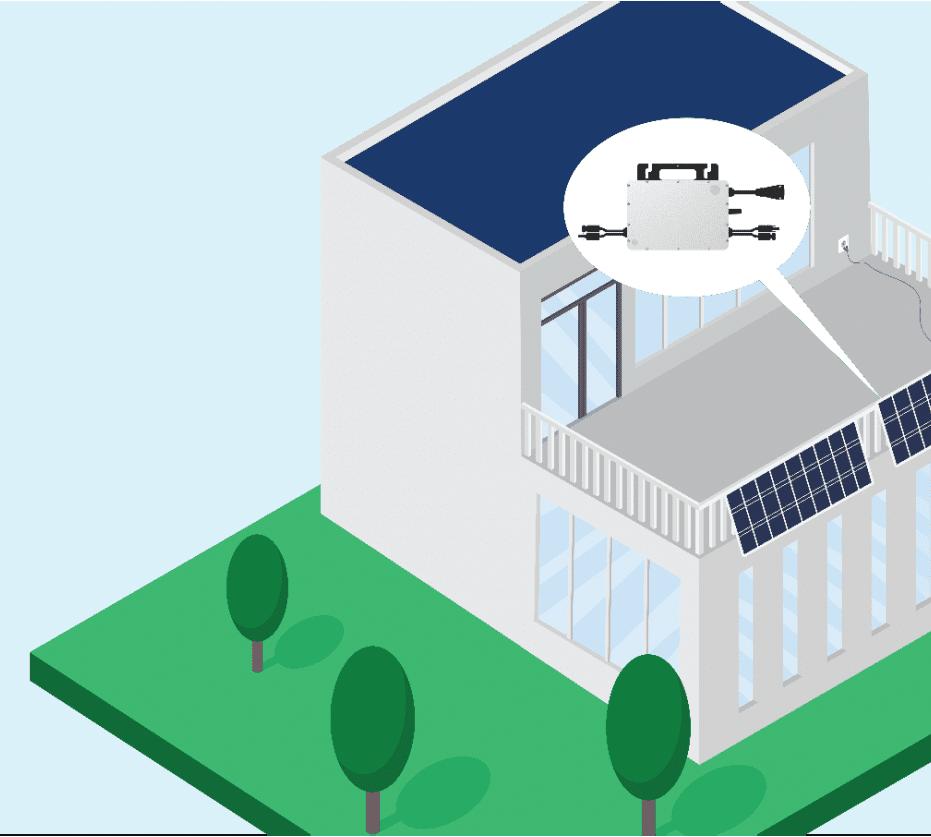

A recent report from the Clean Energy Council (CEC) has revealed that rooftop solar now accounts for 11.2 per cent of the country’s electricity supply.
The Clean Energy Council’s ‘Rooftop Solar and Storage Report’ found that rooftop solar photovoltaic (PV) system installations reached a total capacity of 20 gigawatt (GW) across Australia in 2023.
This rapid growth was driven by both households and businesses increasingly
turning to rooftop solar as their choice.
New South Wales broke the record for the highest annual installed capacity of any state, with 970MW of new rooftop solar systems installed in 2023. Meanwhile, Queensland became the first state to surpass one million rooftop solar installations during the year.
“The sheer scale and pace of rooftop solar in Australia is unparalleled anywhere else in the world, due to an abundance of

Researchers have uncovered a massive untapped potential for rooftop solar installations across Australia, which could deliver $9.3 billion in annual cost savings for people living in apartments, social housing, and renta properties.
The study, conducted by the UNSW School of Photovoltaic and Renewable Energy Engineering in collaboration with the Australian Photovoltaic Institute, found that the total potential for rooftop solar installation is estimated at approximately 61 gigawatts (GW) – three times the current 15.1GW of residential solar installed in the country.
“Our analysis found the power of solar can deliver average annual household bill savings $1300 each year,” Dr. Mike Roberts said, who is UNSW Senior Research Fellow and one of the authors of the report.
“Apartments are another housing type where government investment now will pay high dividends in cheaper bills and less emissions for long into the future.”
The report highlighted certain sectors, such as social housing and rental properties, are significantly

underrepresented in Australia’s residential solar penetration, missing out on the substantial savings and environmental benefits.
“Apartment residents could be saving an average of $500 to $700 a year on their energy bills and could be paying off the system in five years or less,” Roberts said.
“While we have seen recent action on solar for social housing through collaboration between several State and Federal Governments, this approach should be fast-tracked to a greater
sunshine and the inherent benefits including lower energy bills and feed-in tariffs,” CEC Policy Director of Distributed Energy Con Hristodoulidis said.
Last year saw 2.9GW of new rooftop solar capacity installed from 314,507 units, marking the second-biggest year for rooftop solar uptake. This solidified its position as the second-largest source of renewable generation and the fourthlargest source of all electricity generation in Australia.
“More than three million Australians understand that their rooftop solar systems are providing them with substantial savings, greater value and peace of mind,” Hristodoulidis said.
The report also found that 57,000 behind-the-metre batteries were installed in 2023. Hristodoulidis noted that the combination of rooftop solar and home batteries gives households even more control over their energy costs and the ability to support Australia’s transition to renewable power.
“It is clear that now is the time to back home batteries, build on their growing popularity among households and write the next chapter of Australia’s solar success story,” he said.
The CEC has called for a national Home Battery Saver Program of up to $6500 per household to further drive the uptake of battery storage and provide more Australians with cost-of-living relief.
number of social homes, given the outstanding cost savings on bills and other benefits delivered.”
Beyond the household savings, the report found that closing the solar potential gap would create 240,000 additional job-years of employment in the solar industry, supporting those working in sales and installation roles.
“Australian households struggling with rising costs of living have the potential for more than $9 billion in energy bill savings sitting right now in untapped rooftop solar potential,” National Campaigns Director at Solar Citizens Joel Pringle said.
“Unlocking this solar potential can return money to people’s pockets, deliver 785 megatonnes in avoided carbon emissions over 20 years, and the upfront investment is repaid in bill savings for households within about five years.”
The report’s findings highlight the critical need for targeted incentives and policy support to encourage the adoption of rooftop solar, particularly in the rental and social housing sectors, to ensure that the benefits of clean, affordable energy are accessible to all Australians.
Clean Energy Council report shows rooftop solar now supplies 11.2 per cent of Australia’s electricity. Researchers find huge rooftop solar potential offering $9.3 billion annual savings.The solar grazing initiative at ACEN Australia‘s New England Solar Farm is thriving, with over 6000 merino and cross-breed sheep now rotating on and off the 1200-hectare stage one project site.
The sheep and lambs have been grazing on the pastures around the solar panels since last Christmas, gradually introduced to their new feeding ground.
The grazing cycle involves the sheep spending six weeks on the land before being herded back to sheds for health checks or vaccinations. They then move to other paddocks or return to the solar pastures. It will take a few seasons to fully assess the benefits of running the sheep around the panels, but early signs are positive.
Richard Munsie and Cameron Wood, two New England Solar project landholders, have observed the panels creating a favorable microclimate for the ewes.
“The panels shade the early morning pastures, prolonging the effects of the dew and helping the grass grow,” Richard Munsieid said. “The panels also provide shade for the sheep and protection from frosts.”
According to ACEN, previous smallscale solar grazing trials in Western NSW have reported an increase in carrying capacity and wool quality. While it’s too early to determine the results for the cooler climate of the Uralla region,
the early signs point to a bright future ahead, with the possibility of a unique branding opportunity for Australia’s finest solar grazing fleece.
The 720 megawatts (MW) New England Solar project, developed by ACEN Australia across 2000 hectares of leased grazing land, will provide enough clean renewable power for around 300,000 homes.
The first 400MW (520MW DC) stage, one of the largest operating solar PV generators in Australia, was completed last year, with production reaching its 400MW capacity in December 2023.
Stage two includes a 320MW solar development and a 200MW two-hour battery storage system, capable of powering 175,000 homes. Work on stage two is expected to begin in late 2024.

APA Group has officially opened the Dugald River Solar Farm (DRSF), Australia’s largest remote grid solar farm.
The 88-megawatt (MW) facility demonstrates APA’s commitment to investing in reliable, affordable, and lower emissions energy solutions for customers and the Mount Isa community, Queensland.
The massive solar farm, covering an area 65 times larger than the Gabba playing field in Brisbane with its 184,000 panels, will provide solar energy firmed by gas from APA’s nearby Diamantina Power Station. It will support major resource companies

MMG, Mount Isa Mines, and New Century with renewable power.
“Dugald River Solar Farm is a model for how the Australian resources sector can decarbonise,” Petrea Bradford, APA Group Executive of Operations said.
“APA has invested over $1 billion in energy assets in the North West Minerals Province, and we’re proud to continue delivering safe, reliable, and affordable energy to the region.”
The solar farm aligns with APA’s goal to reduce emissions intensity from its power generation infrastructure.
Bradford noted it exemplifies the company’s capabilities in delivering remote grid hybrid energy solutions, a strategy that presents significant growth opportunities as the company supports resource customers’ net zero ambitions.
With over $1 billion invested in the area, APA reinforced its commitment to the Mount Isa community through this major renewable energy project. The Dugald River Solar Farm demonstrates how integrated assets can provide decarbonisation pathways for the resources sector.
APA’s Dugald River Solar Farm is officially open. ACEN Australia’s solar grazing initiative thrives with 6000 sheep on 1200-hectare site.A new $3.6 million initiative is bringing reliable, renewable energy to apartment residents in the Australian Capital Territory.
The Solar for Apartments Program, cofunded by the Australian and ACT Governments will allow body corporates to request quotes and apply for rooftop solar installations.
The program provides grants of up to $100,000 per body corporate, with half coming as a Commonwealth grant or rebate and the other half as an interest-free loan. This initiative is expected to benefit over 2100 households and potentially reduce energy bills by 35 per cent for apartment dwellers.


The Solar for Apartments Program is part of the Community Solar Banks initiative by the Australian Government and the ACT Government’s Sustainable Household Scheme. Brighte, the exclusive finance and administration provider for the ACT’s scheme, has already received over 22,000 applications.
Body corporates in the ACT can now request quotes on rooftop solar installations from eligible vendors on the Brighte Marketplace. The program aims to make cheaper, cleaner solar energy accessible to those who have previously missed out on the benefits of renewables.
ACT Chief Minister and Minister for Climate Action Andrew Barr emphasised the importance of clean energy for the apartment residents in Canberra.
“As well as allowing more Canberrans living in apartment complexes to enjoy cheaper, cleaner energy, the Solar for Apartments Program also supports our commitment to transitioning to a cleaner and more reliable energy mix,” Barr said.
“This program supports the ACT Government’s commitment to being a global leader in climate action and reducing emissions to net zero by 2045.”
Federal Minister for Climate Change and Energy Chris Bowen said the Government want all Canberrans to have access to cheaper, cleaner, reliable renewables.
“This will lower energy bills for those living in apartments that traditionally haven’t been able to access the cost savings of renewables,” Bowen said.
The Victorian Government is supporting the state’s clean energy transition by investing $20 million in RayGen Resources, a company developing an innovative solar and thermal water-based energy storage solution.
According to the Victorian Government, RayGen has created photovoltaic solar modules that generate nearly 2000 times more power than traditional solar panels under concentrated sunlight.
RayGen’s solar and thermal-water energy storage system offers a high-efficiency, long-duration and scalable energy storage solution.
The Victorian company has operated a test facility in Newbridge since 2015, while its flagship solar and storage project is located in Mildura. A new manufacturing plant is also under construction in Hawthorn East.
“We’re supporting good ideas like RayGen’s energy storage solution – keeping our best and brightest minds and ideas on home soil and creating good jobs for
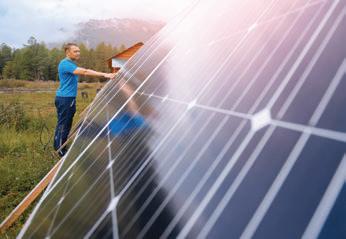
Victorians,” Victorian Economic Growth Minister Tim Pallas said.
While most solar panels used in Australia are imported, RayGen’s modules will be locally manufactured in Victoria.
The $20 million investment comes from Breakthrough Victoria, the government’s investment firm managing the Breakthrough Victoria Fund.
It joins several strategic investors already
backing RayGen, including SLB, Equinor Ventures, AGL Energy, Photon Energy Group, Chevron Technology Ventures and the Australian Renewable Energy Agency.
“We are investing in RayGen Resources because they focus on what Victoria needs – sustainability, scale and local manufacturing,” Breakthrough Victoria CEO Grant Dooley said.
“Their innovative technology will help us (Breakthrough Victoria) better transition to renewable energy.”
State Energy Minister Lily D’Ambrosio highlighted the emissions reduction, lower power bills and local job creation benefits of RayGen’s solar technology.
“It’s great to see Victorian businesses taking the lead in new renewable energy technologies,” D’Ambrosio said.
RayGen CEO Richard Payne said the company is “delighted to be working with Breakthrough Victoria” as a “Victorianborn company with global ambitions for dispatchable renewable energy generation and advanced manufacturing”.
A $3.6 million initiative will bring renewable energy to ACT apartment residents. Victorian Government invests $20 million in RayGen Resources for solar innovation. Image: Parilov/stock.adobe.comADVERTISE IN




EXPERT COVERAGE OF THE PROJECTS AND DEVELOPMENTS THAT ARE RESHAPING THE AUSTRALIAN ENERGY MARKET.









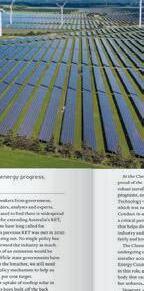

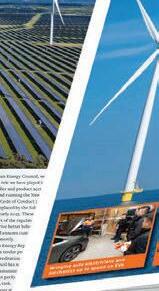











23,000+ COMBINED CIRCULATION




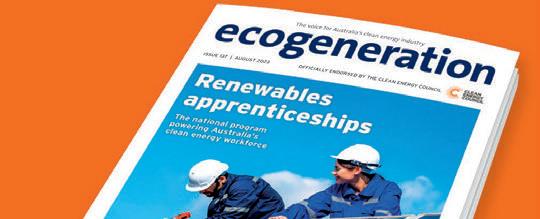











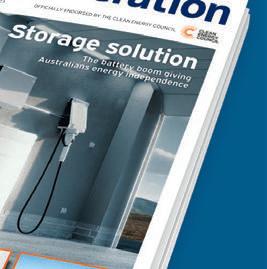





Our magazine, e-newsletters and website are valued at all levels of the industry, from financiers and developers to installers and suppliers. As the energy market transitions to renewables, our readers look to ecogeneration.



ecogeneration is the only title in Australia to cover all aspects of the clean energy industry; delivered across print, online and email. The bi-monthly magazine, officially endorsed by the Clean Energy Council, keeps the industry informed from the boardroom to the work van.




The print and digital magazine, and pass on rate, has a combined circulation of more than 23,0000, as well as receiving extra distribution at important industry events.
For more information, please contact: Nick Lovering Business
Development Managernick.lovering@primecreative.com.au 0414 217 190
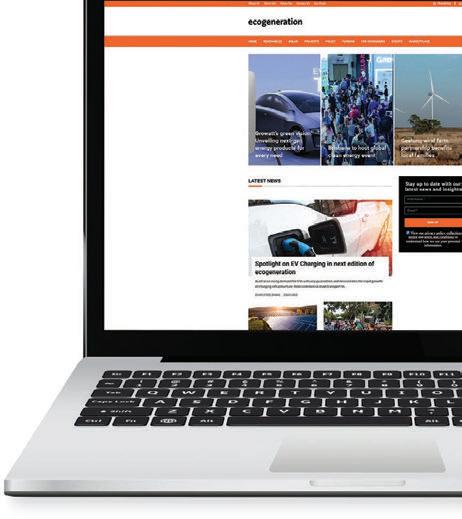










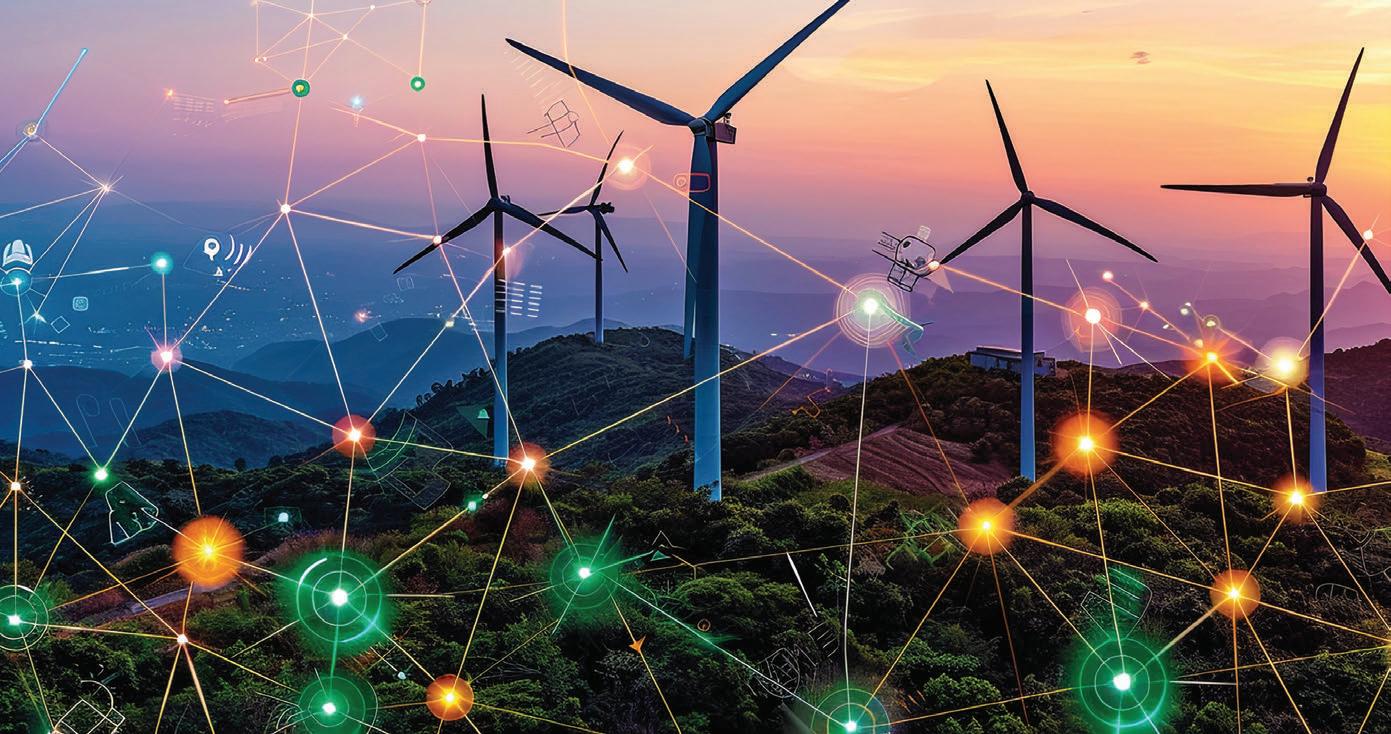
Marco Stella from CORE Markets provides a snapshot of Australia’s clean energy market.
Large-scale generation certificate market
The front end of the large-scale generation certificate (LGC) curve was softer across the first half of March before an increase in voluntary demand saw the spot climb from the low $44s to reach a high of $47.50 in the first half of April. The spot then spent the next month trading between the low $46s and the low $47s as was the case the last year, a clear preference for spot over Cal 24 forwards has seen the carry rate for the first forward vintage remain below ‘normal’ levels for this time of year.
The mid-section of the forward curve has been the most stable, with the Cal 25s and Cal 26 contracts seeing the least variance.
The former started March in the low $47s,
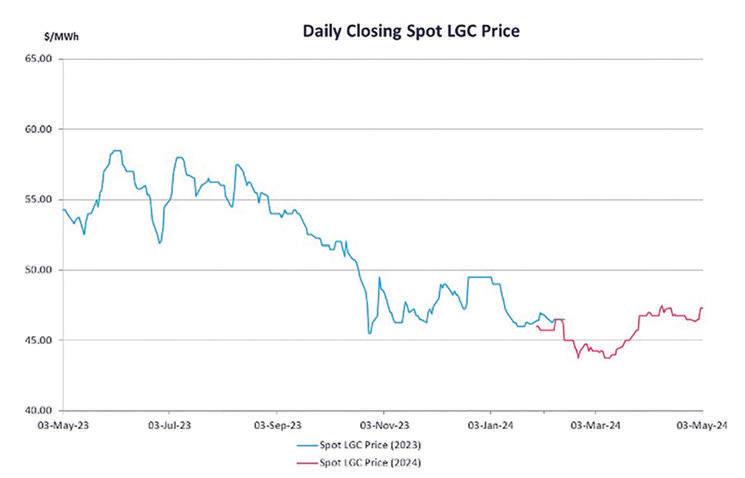
reached $48.90 in early April before spending the next month in the low to mid $48s.
The Cal 26s were even more stable, trading the entire period between $39.25 and $40.25, where they sat at the time of when this article was published.
The Clean Energy Regulator’s surrender figures were released during this time and showed a substantial increase in the surplus of LGCs carried forward from 2023 to 13.5m, though much of this owed to the over 4m shortfall penalty payments that occurred.
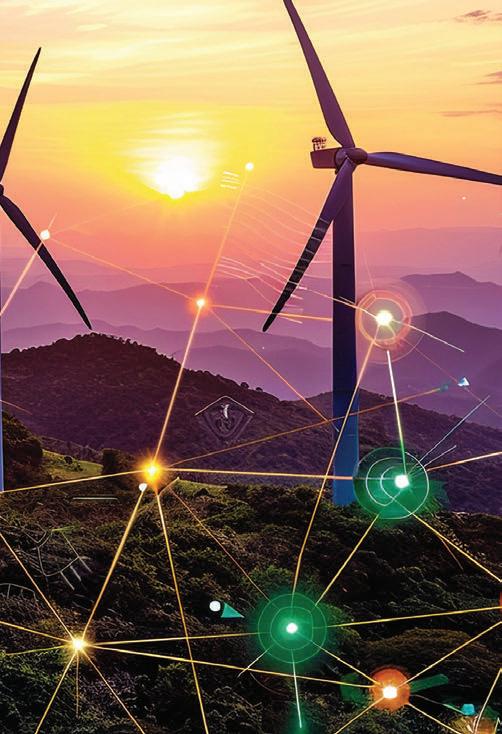
Following the release of the 2024 Small-scale technology percentage (21.26 per cent, expecting 33.6m STCs to be created), the spot STC price climbed across March from $39.65 until the Clearing House returned to deficit in early April.
It was expected that the deficit would remain across all of Q2 and potentially most of Q3, yet when the dust settled after Q1 compliance (April 28), the deficit was significantly smaller than many had expected, and it now appears the surplus will likely return by the end of May. This could potentially make things interesting for the
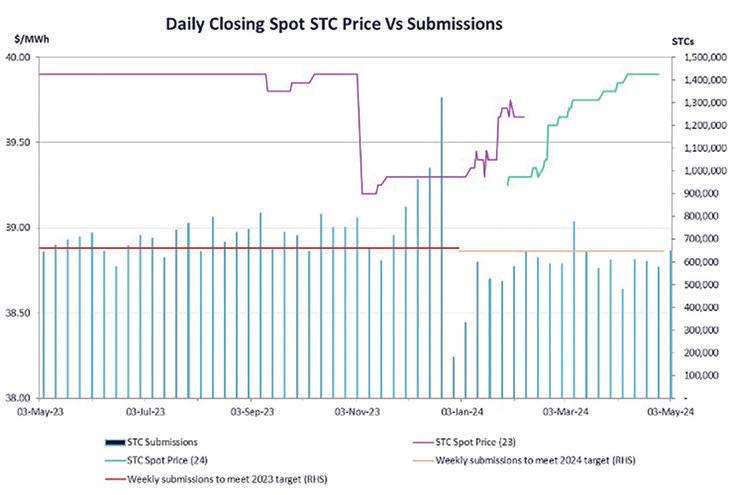
remainder of the year, especially Q4 which was where prices softened the most in 2023.
Conditions in the VEEC market have gone from bad to worse in recent months. Creation remains well below the rate required to meet the target and further changes that are likely to reduce supply (including a ban on door knocking and tele-sales being announced) have also been announced, reducing supply expectations for the remainder of the year.
Based on current creation levels, the market will not have sufficient VEECs available for the 2024 compliance year. The only way this
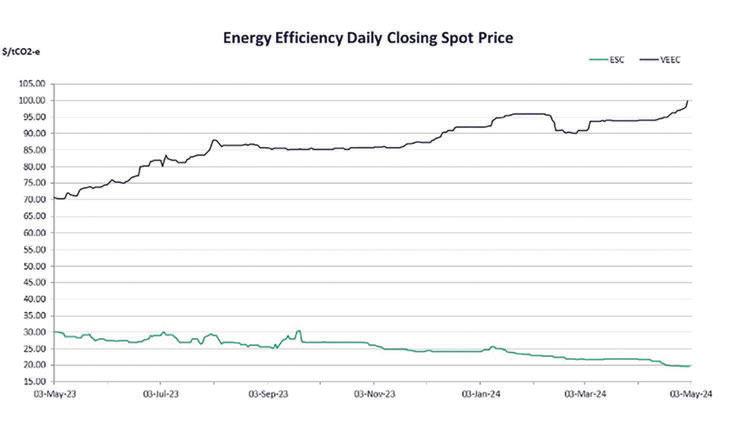
will change is if some major new activity is announced soon, some obligated entities decide to pay the penalty for a large proportion of their 2024 obligation or there is a significant regulator intervention from the Department.
Unsurprisingly, the spot price which began March at $91.00 has steadily climbed to $100 at the time of writing, leaving the nominal penalty level of $90 in its wake.
Meanwhile north of the border, the ESC market enjoyed a stable period across March in the high $21s until record creations and large trading volumes put pressure on the already low price, which softened across April to reach $19.60 at the time of writing.
A number of regulatory changes that are taking place in June and July which will impact Heat Pump installations and fridge and freezer activities, along with anticipated changes to the commercial lighting method may very well reduce supply in the latter part of the year. But the June deadline for 2023 activity date ESC registrations plus the deadlines created by the scheme changes could yet cause a hefty run of creation in the coming months.
The stark contrast in fortunes between the nation’s two energy efficiency markets has now never been greater, as the chart illustrates.





Clean Energy Council
Queensland Gala Dinner
For the first time, the leaders of Queensland’s energy transition will come together in evening hosted by the Clean Energy Council. The night promises to be the premier event for government and industry leaders in Queensland to connect over dinner, drinks and entertainment.
Date: 4 June 2024 @5:30pm
Location: Plaza Terrace Room, Brisbane Convention and Exhibition Centre
Link: cleanenergycouncil.org.au/events/ qld-clean-energy-gala-dinner-2024
Australian Energy Week
As a major annual conference and expo for the entire energy supply chain, Australian Energy Week brings together generators, networks, retailers, end users and government to help shape the energy transition.
Date: 11-14 June 2024
Location: Melbourne Convention Centre Link: energyweek.com.au
Melbourne Member Mixer
The Clean Energy Council is thrilled to

reunite the Victorian renewable energy industry for an evening of networking and presentations from key leaders at the Melbourne Member Mixer in June.
Date: 13 June 2024 @5:30pm
Location: Allens, Level 37/101
Collins Street, Melbourne
Link: cleanenergycouncil.org.au/events/ melbourne-member-mixer-2024
The Australian Hydrogen Conference
Bringing together the hydrogen sector’s most eminent energy leaders that help shape the future of the industry across the nation and overseas. The conference will showcase of the latest new developments for the sector, including the Hydrogen Headstart program, key project updates from Australia’s hydrogen proponents, and many other players from across Australia.
Date: 18-19 June 2024
Location: Adelaide Convention Centre
Link: australianhydrogenconference.com.au
Australian Clean Energy Summit
Join industry leaders as they shed light on the most pressing topics in clean energy. From clean finance to securing


sustainable supply chains, it has got you covered. ACES 2024 will include highprofile speakers, in-depth sessions, and the ever-popular Women in Renewables Lunch and Gala Dinner.
Date: 16-17 July 2024
Location: ICC Sydney
Link: australiancleanenergysummit.com.au
Careers for Net Zero QLD Roadshow
The Careers for Net Zero QLD Roadshow will showcase the many career opportunities that will help deliver an equitable, prosperous and net zero emissions Australia. The events will connect students, graduates and experienced workers from across regional Queensland with employers committed to sustainability and growing the clean economy.
Date: 6-14 August 2024
Location:
• Toowoomba – 6 August 2024
• Gladstone – 9 August 2024
• Townsville – 14 August 2024
Link: cleanenergycouncil.org.au/events/ careers-for-net-zero-qld-roadshow













JOIN



We are proud to be recognised as ‘Top Bankable Module Supplier’ by BloombergNEF since 2016.
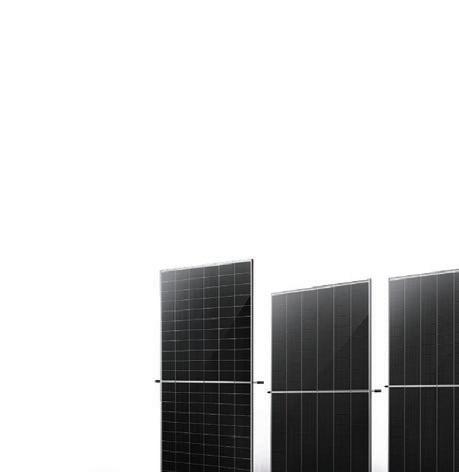

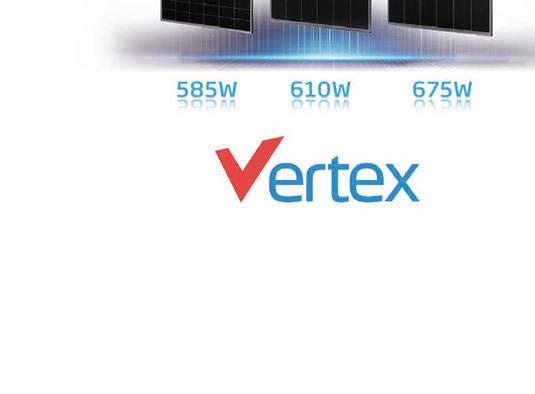
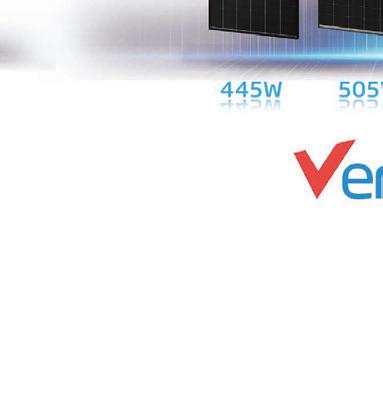

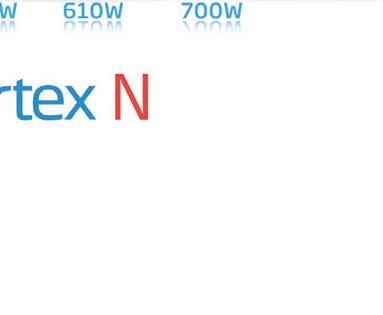
Wide range of 210mmultra-highpower modules designedforallapplications